Black water on board: definition, impact and good practices
When you're sailing, it's essential to think about the environmental impact of your boat. Among the sources of pollution that need to be controlled, black water - i.e. waste water from toilets - is a real issue. Discharging it directly into the sea can have harmful consequences for water quality and marine biodiversity. Fortunately, there are solutions for managing this water responsibly and limiting its impact. Here are the best practices and equipment for environmentally-friendly sailing. 🌊💙
What is balck water?
There is a difference between grey water and black water. Grey water is washing water discharged from sinks, washbasins, showers, etc.
Black water is water from toilets. Unfortunately, it is often discharged untreated into the sea.
Two things make it harmful to the environment and biodiversity:
- pharmaceutical residues from medicines,
- chemical additive residues, which are also found in black water.
In addition, large concentrations of black water can sometimes be found in harbours or mooring areas. However, it is forbidden to discharge wastewater in harbours and in the 3 nautical mile zone.
The impact of black water on the environment
Like grey water, black water is harmful to the environment because it:
- presents health risks: when this water is discharged near bathing areas, the bacteria it contains can cause illness.
- disrupt ecosystems: in high concentrations, black water significantly accelerates the development of aquatic vegetation and the depletion of oxygen in the environment.
- threaten marine life: pharmaceutical residues and chemical additives have serious consequences for marine animals. For example, they can change the sex of certain living organisms.
Good practices on board and in the harbour
It is essential to reduce the impact of our activities on the environment. To do this, we can adopt simple ecogestures.
- Use the harbour toilets
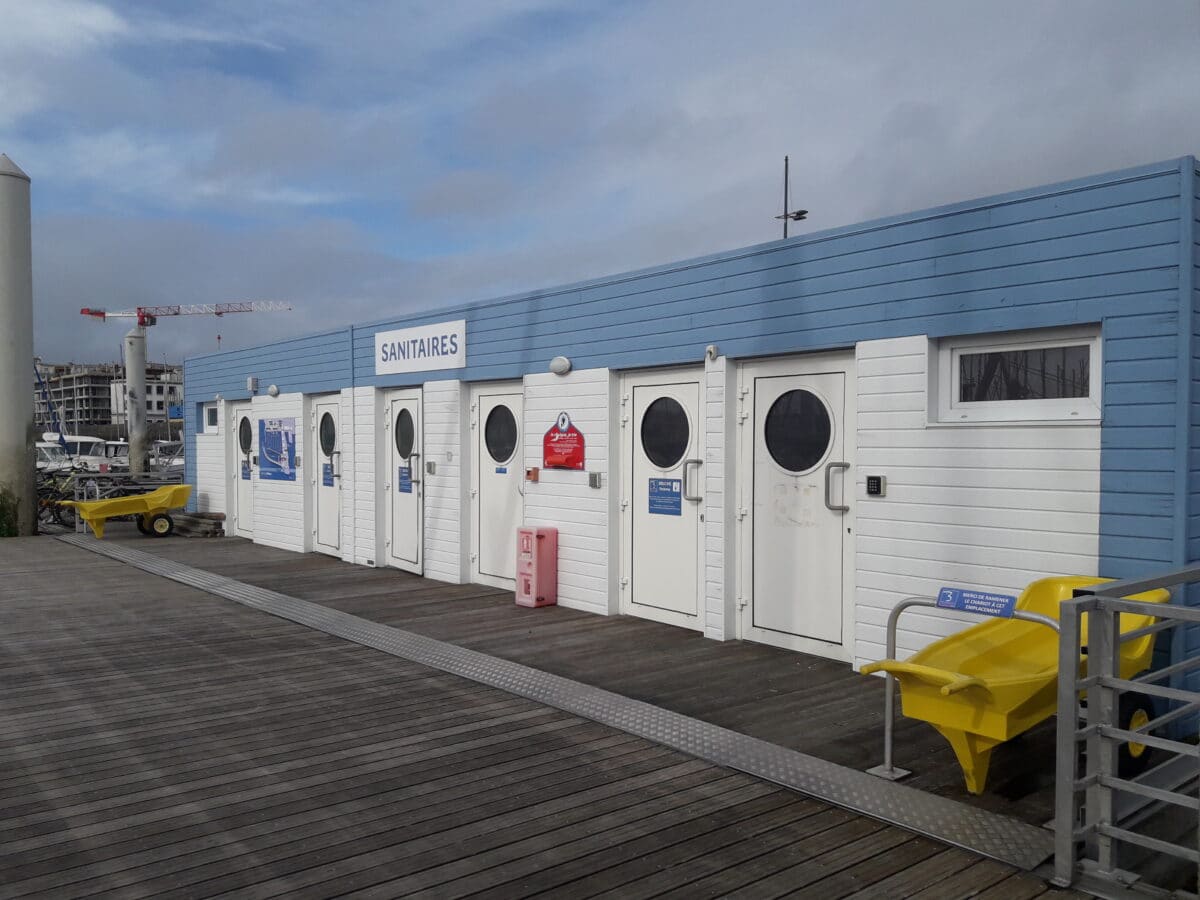
By using the toilets in the harbour rather than those on your boat, you can reduce the amount of waste water discharged into the sea. It's a simple gesture that helps to preserve water quality and protect marine fauna.
It's also a more practical and comfortable solution, avoiding the time-consuming management of black water tanks on board.
Preserving the ocean starts with small, everyday choices! 💙🚤
- Use the black water pumps
Brest's marinas are equipped with black water pumps to prevent emptying at sea or on the pontoon.
If necessary, harbour agents can help you use these pumps.
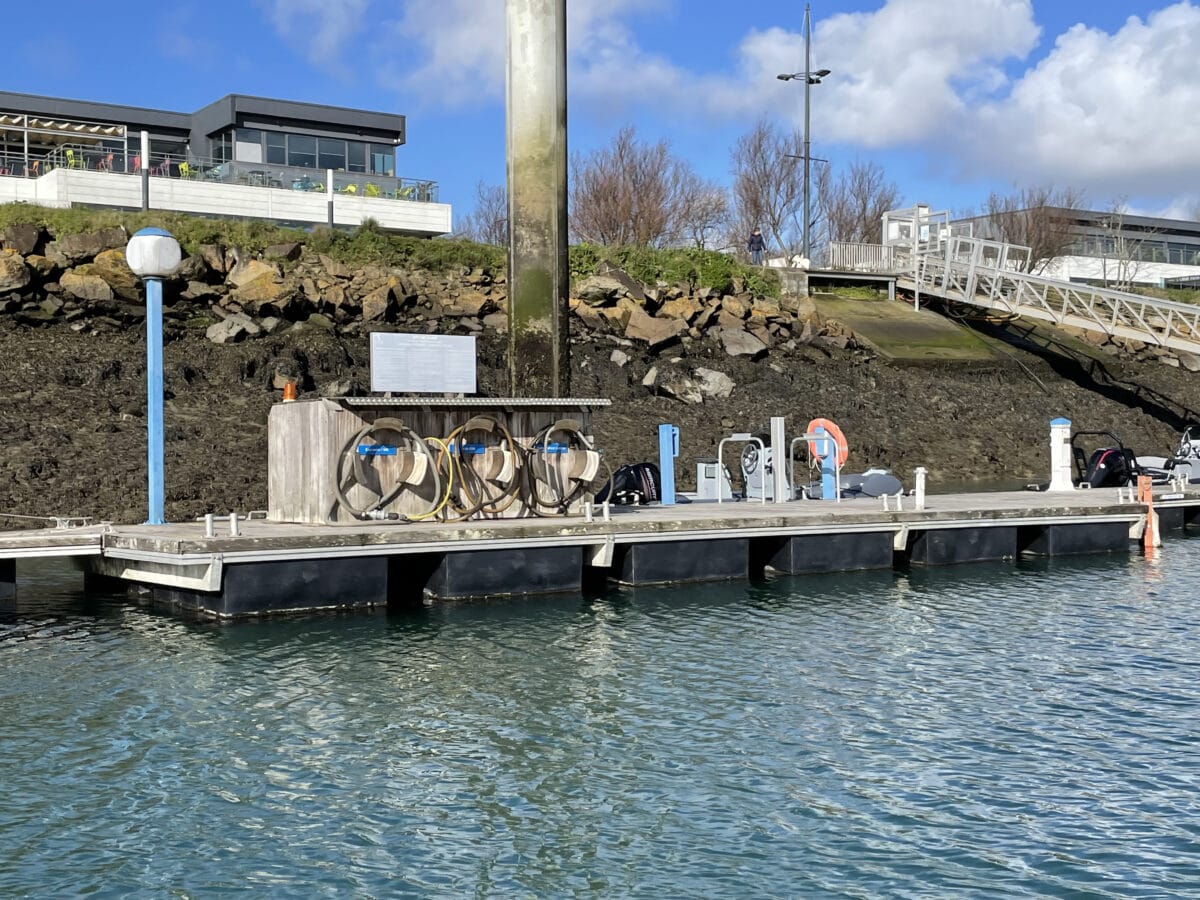
Managing black water correctly means taking action to preserve the sea and biodiversity. By adopting good practices and using the right equipment, every yachtsman can help limit pollution. A small effort for a big impact on the environment! 🌿⚓
Grey water on board: definition, impact and good practices
Did you know that grey water, generated by daily activities on board, has a significant impact on the marine environment? Too often neglected, it contains chemical and organic substances that threaten biodiversity and alter water quality. In this article, find out what grey water is, its effects on the ecosystem and the simple steps you can take to limit its impact while sailing responsibly.
What is grey water ?
Grey water, also known as ‘household water’, is simply water used for washing inside (sink, shower, washbasin, etc.) and outside (deck, cockpit, etc.).

Grey water is often considered less polluting than black water. Yet it contains chemicals that are harmful to the environment: washing-up liquid, soap residues, detergents, etc.
The impact of grey water on the environment
Unfortunately, grey water has an impact on the environment because:
- it disrupts oxygen exchanges: it contains organic residues, oils and detergents that disrupt oxygen exchanges in the water. Fats form a film that prevents oxygenation, while the decomposition of organic matter consumes oxygen. These disturbances can lead to a lack of oxygen, seriously affecting aquatic ecosystems.
- it endangers marine life: grey water can inhibit the growth of aquatic organisms, slowing their development. Chemical contaminants, like surfactants and oils, disrupt essential processes such as photosynthesis and metabolism. This affects plants, algae and marine animals, compromising the balance of aquatic ecosystems.
- it presents a danger to humans: cleaning products contain chemicals that can be allergenic or even carcinogenic. What's more, most of them are as useless as they are expensive.
- it ccentuates coastal erosion: when sea spray reaches the coast, it is contaminated by grey water and attaches itself to plants. This weakens them, and the loss of these plants accelerates coastal erosion.
Good practices on board and in the harbour
To reduce the impact of our activities, there are a few simple ecogestures to adopt:
- Use harbour facilities
To avoid discharging polluted water, give priority to using the showers and washbasins provided for yachtsmen. By using these facilities, you are helping to avoid discharging grey water directly into the sea, thereby preserving water quality and marine biodiversity.
- Use the grey water pump

Brest marinas are both equipped with black and grey water pumps. This allows you to empty your tanks while limiting pollution in the harbour.
- Use environmentally-friendly products
These days, there are several ecological solutions for maintaining your boat effectively while protecting the environment.
Use eco-labelled products containing surfactants and active ingredients of natural origin.
These multi-purpose products are highly effective and less polluting.

Taking action to reduce grey water pollution is essential to preserving our oceans and the ecosystems that depend on them. By adopting respectful practices, such as using port equipment and environmentally-friendly products, every yachtsman can help to limit his or her environmental footprint. Protecting the sea also means guaranteeing a healthy environment for future generations. Thanks to good practice, we can make boating a sustainable leisure activity! 🌊
Want to find out more about the eco-actions you can take on board and at sea? Check out the Manche Atlantique eco-gestures website.
How to get a berth in Brest ?
When you're thinking of buying a boat, new or second-hand, the question of mooring in the harbour quickly arises. Very few marinas have annual moorings afloat without going through a waiting list. And Brest's marinas are no exception. Find out how to get a berth in Brest, whether you're looking for a year-round or seasonal solution, or whether you're making a stopover with us.
How to get an annual berth in Brest
Brest's marinas have around 2,000 annual berths between them. But high demand means you have to go through a waiting list, whatever the size of your boat.
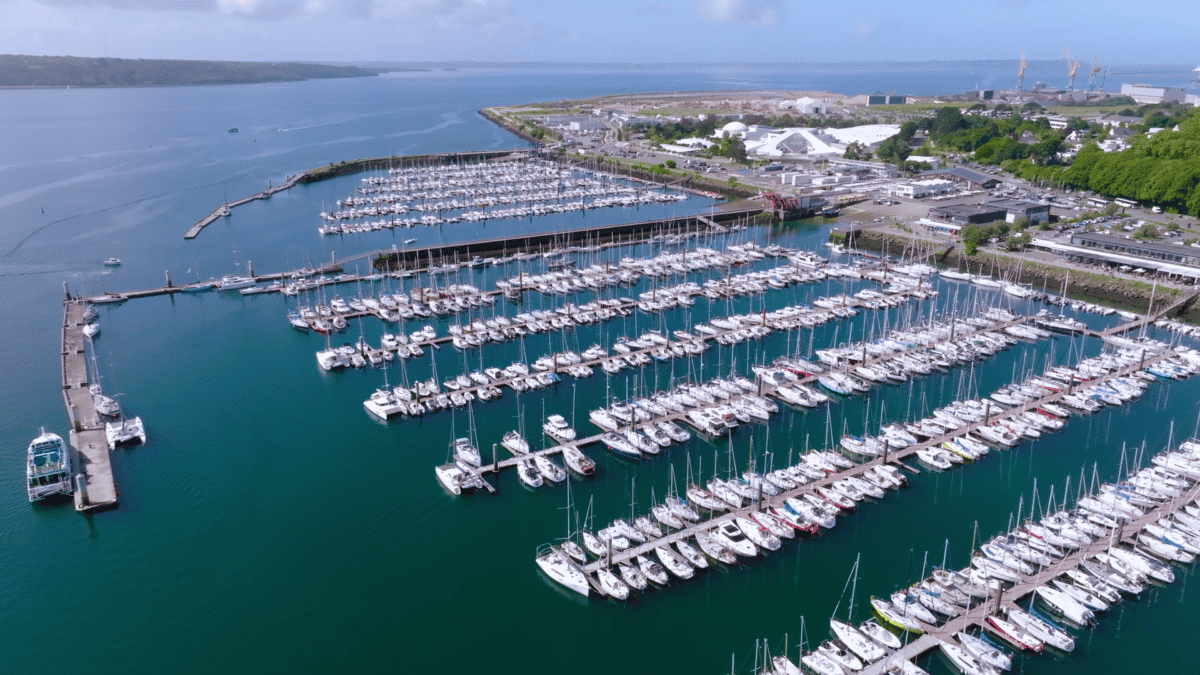
Make sure you think about the question of mooring afloat as soon as you start planning to buy your boat, by registering on the waiting list. Some categories, particularly for 9 to 10.5 metre boats, are saturated and progressing slowly.
You can register online or directly at the harbour office. Registration is subject to an annual fee of €15 per year and per port.
Once it's your turn, and to draw up the annual contract, you'll need to provide a number of documents:
- a copy of your identity card
- a copy of the boat registration certificate in your name
- an insurance certificate
Contracts are tacitly renewable every 1st of January, and it's up to yachtsmen to request cancellation if they wish to leave the port. There is a two-month notice period.
All these provisions are detailed in the Brest marinas' General Terms and Conditions.
Obtaining a seasonnal berth
For a berth afloat for a specific period, apply for a seasonal berth.
Brest marinas offer monthly contracts afloat, but high demand between April and September limits the number of berths available.
From October to December and January to March, take advantage of winter contract afloat to obtain a berth at a special rate. These packages guarantee you a berth until the 31st March. After that date, if no monthly berths are available, boaters pay the current daily stopover rate.
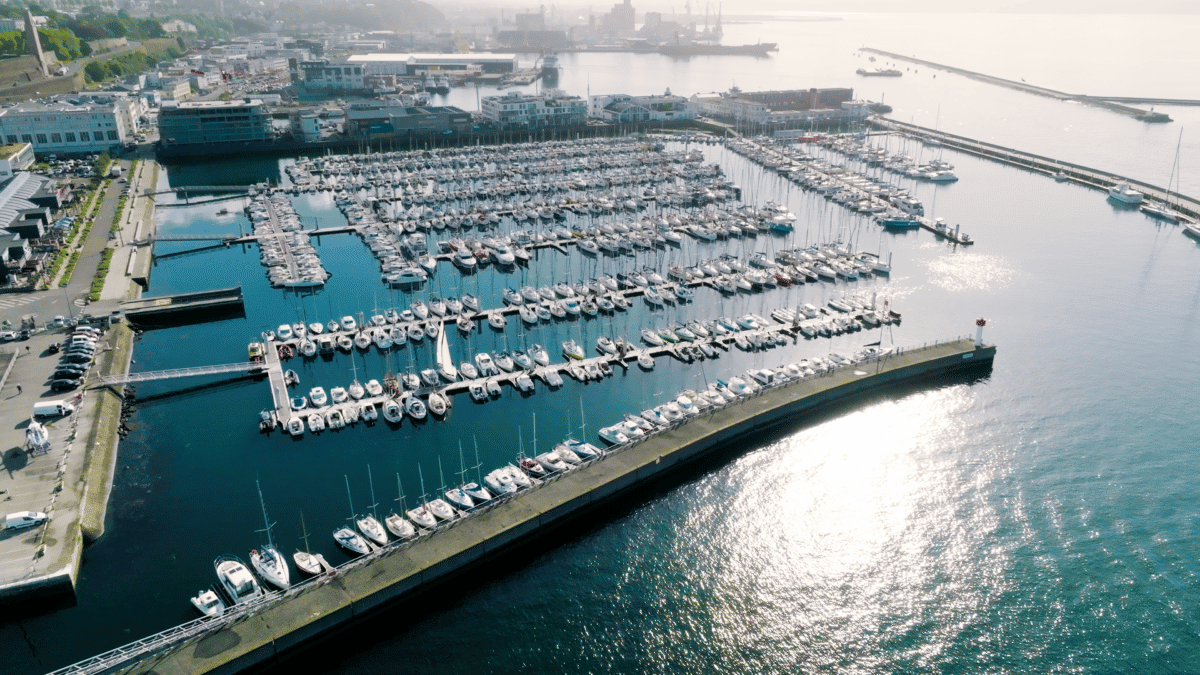
To draw up your monthly contract, provide the same documents as for an annual contract: identity document, registration certificate and insurance certificate.
Calling at Brest
The Brest marinas do not take reservations for berths on the visitor pontoon. If you are thinking about calling at Brest, you can contact the harbour office the day before your arrival to find out about availability at the pontoon.
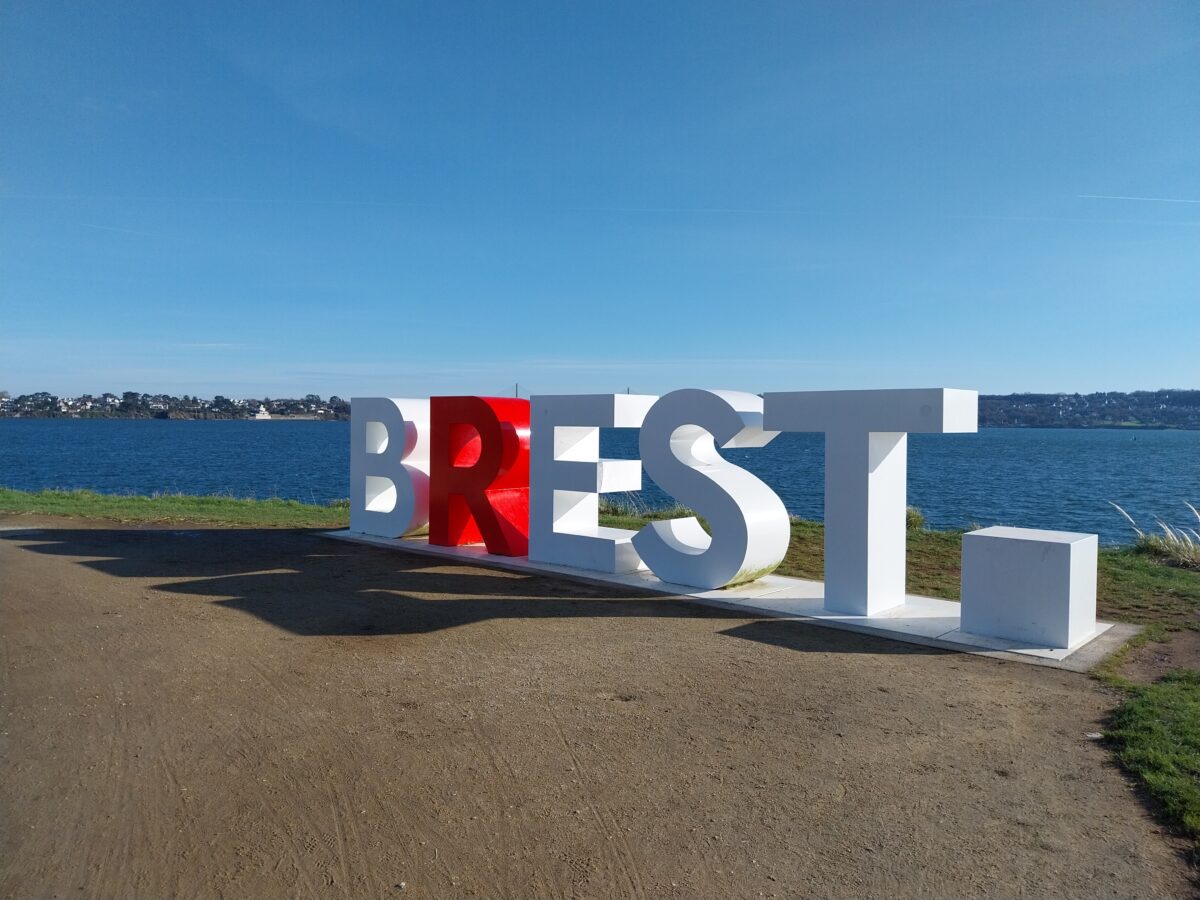
When you arrive at the Marina du Château or the Marina du Moulin Blanc, report your arrival on VHF channel 9. The harbour agents will then show you a berth suited to the characteristics of your boat and the length of your stay.
Brest's marinas respond to the needs of yachtsmen by offering tailored solutions: an annual berth, a seasonal berth or a winter contract. Plan ahead, prepare your documents and contact the harbour offices directly for all the information you need.
Maintaining sails and ropes: prolonging their lifespan
Maintaining sails and ropes is essential to ensure safety at sea and extend the life of this equipment. Well-maintained sails guarantee optimum performance, while ropes in good condition prevent accidents and costly replacements. Regular care of these elements not only optimises sailing, but also reduces the environmental impact by avoiding unnecessary purchases.
Maintaining sails
Sail maintenance plays an essential role in prolonging the life of sails and maintaining their efficiency when sailing. Regular care helps prevent costly repairs and maintain optimum performance.
Cleaning the sails
The first recommendation is to clean the sails regularly with fresh water.
This removes salt, dust and other residues that can damage the fabric over time.
For small, stubborn stains, use a mild soap.
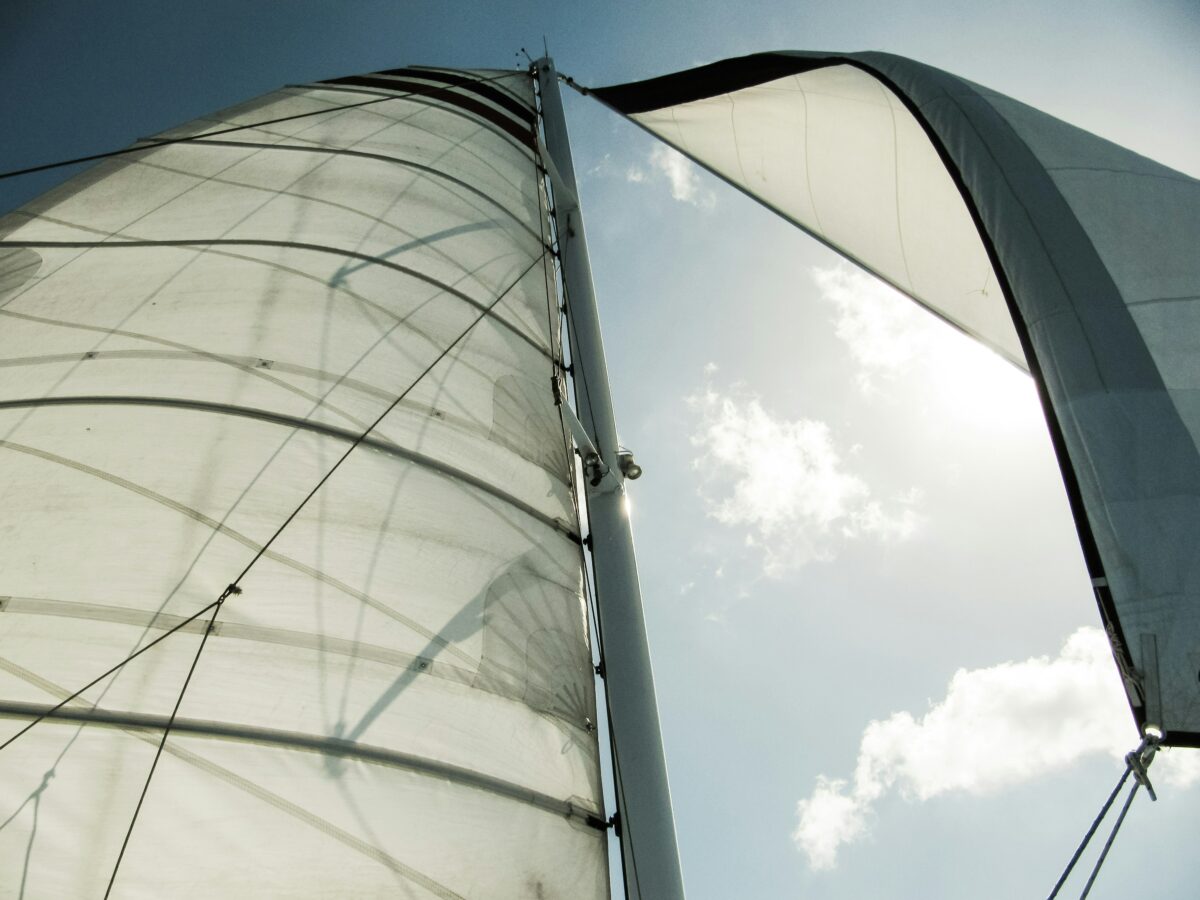
Similarly, it is crucial to dry sails thoroughly before storing them. Moisture is one of the main causes of mould, which damages sails.
Regular inspection of sails
Inspect your boat's sails regularly. Seams, creases and reinforced edges are often the first areas to show wear. Also look out for small tears, which can quickly become serious if not repaired in time.
As soon as a weakness is detected, you need to intervene quickly. A temporary patch can prevent a tear from getting worse.
For more serious damage or damaged seams, it's best to call in one of the professionals working around the harbour.
Sail storage
Sail storage is another key aspect of sail maintenance.
If your boat spends the winter afloat, it's best to de-reef the sails. Similarly, if they are not going to be used for a long time, it is advisable to store them in a dry place away from the sun. Depending on the type of sail, they can be folded or rolled, taking care to avoid damp areas and prolonged exposure to UV light.
These precautions help to preserve the flexibility and strength of the materials.
Maintaining ropes
Maintaining your ropes is just as important as maintaining your sails. By keeping them in good condition, you can avoid unexpected breaks and costly replacements. Regular care also prolongs their life.
Cleaning ropes
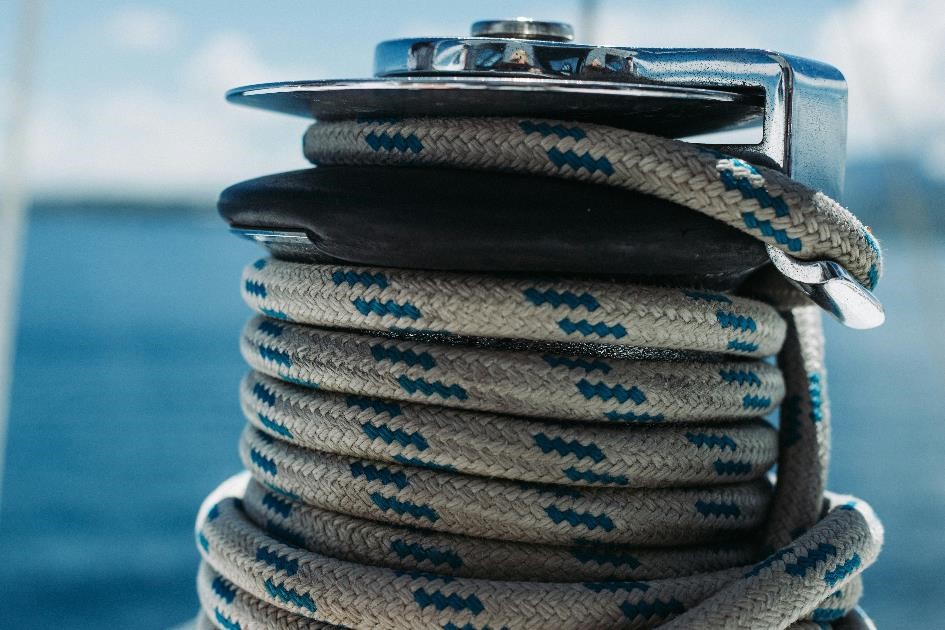
Ropes easily accumulate salt, dust and marine debris. To clean them, simply rinse them regularly with fresh water.
And as with sails, dry your ropes well before storing them. This will prevent moisture-related mould.
Regular rope inspection
Check your ropes regularly to spot signs of wear early. Concentrate on areas of friction, ends and areas of high stress. Frayed fibres, knots or twists should alert you to the need for replacement.
When a rope shows signs of weakness, it should be replaced quickly.
During the winter, check your mooring regularly. And to limit the wear and tear on your halyards, remember to stiffen them. Poorly tensioned halyards hit the mast and, as well as being noisy, wear out prematurely.
Storage
Storing ropes properly helps prevent them from deteriorating. It is advisable to wrap them properly, without over-tightening, to avoid twisting and knots.
Then store your ropes in a dry place, out of the sun, to preserve the quality of the fibres.
Maintaining sails and ropes regularly allows you to sail with complete peace of mind, while preserving your equipment and reducing your ecological footprint. Cleaning, inspection and storage are simple steps that, if carried out regularly, will ensure that your equipment lasts longer. Investing time in this maintenance will save you a lot of trouble and contribute to safer, more efficient sailing.
Individual electricity meters for boaters in Brest: what you need to know
In response to the growing need for better management of energy resources in ports, Brest is preparing to install individual meters for yachtsmen. The aim of this initiative is to give each user a sense of responsibility by enabling them to monitor and adjust their electricity consumption. In this article, find out why this measure is being introduced, who is affected, and how it will impact both resident and non-resident boaters.
Why install individual electricity meters for boaters?
The installation of individual meters for yachtsmen in Brest's ports is part of a drive to better manage energy consumption.
Thanks to these meters, each yachtsman will be able to monitor and adjust his consumption according to his real needs. Everyone becomes responsible for their own use, which encourages more eco-responsible behaviour.
This measure is part of a wider drive to reduce environmental impact. The unplugging campaign carried out earlier this year has already reduced energy consumption by 15%. By giving everyone greater control over their energy use, individual meters will reinforce this momentum.
This initiative is also in line with the Clean and Active for Biodiversity Harbours certification. It aims to reduce the port's environmental footprint while ensuring sustainable management of energy resources.

Which yachtsmen are affected by the installation of individual electricity meters?
The new individual meters will be installed from the 1st of October, mainly for resident boaters in Brest's ports.
Resident yachtsmen are those who :
- have a contract with and are domiciled at the harbour and/or,
- stay on board their boat for more than one month a year.
These boaters, who are more present in the port, are the ones who use the most energy.
Harbour staff will install and seal the meters directly onto the yachtsmen's extension leads. Each meter must remain permanently accessible for consumption readings, which will be taken every 15th of the month.
If a yachtsman leaves on a cruise and stays in another port, he will be able to break the seal and replace it on his return. Each yachtsman will receive five seals per year, and will be able to obtain more if necessary by visiting the harbour office.
This installation will enable better management of electricity consumption, while ensuring that yachtsmen are autonomous in their use of energy.
Operation and billing: what you need to know
The installation of individual electricity meters will begin with a test period, from October to December 2024, during which no billing will be applied. This period will allow boaters to adapt to the new system and adjust their consumption habits.
From January 2025, a flat rate of 200 kWh per year will be included in the contract of each resident boater. This package is designed to cover everyday needs such as recharging batteries or powering a fridge before a cruise. Any consumption in excess of this flat rate will be billed at the actual purchase price of the electricity.
Billing will be quarterly, based on consumption readings taken every 15th of the month. An operating charge of €5 per month will also be added to each invoice to cover the costs of maintaining and managing the meters.
It is important that boaters manage their consumption independently and comply with the rules on disconnection when away from their boat. A connected meter will henceforth be interpreted as a presence on board. Failure to comply with these rules may result in penalties.
What are the alternatives to individual electricity meters for non-resident yachtsmen?
Non-resident yachtsmen, i.e. those who do not stay in the port for more than one month a year or who do not have a domiciled contract, will not benefit from individual meters. However, alternative solutions have been put in place to meet their occasional electricity needs.
If you need to plug in your boat to recharge batteries, power a fridge before a cruise or carry out work on board, you can obtain a special label from the harbour office. This label will allow you to plug in your boat for 24 hours, renewable on request.
In addition to this temporary solution, we strongly encourage non-resident yachtsmen to consider alternative energy solutions, such as installing solar panels or wind turbines on board. These technologies offer greater energy autonomy and help to reduce the environmental impact of each yachtsman.
The installation of individual meters in Brest's ports marks an important step towards more sustainable and responsible energy management. Whether you are a resident or not, these new measures aim to better meet the specific needs of each individual while reducing the overall environmental impact. By adopting these practices, boaters are actively helping to preserve resources while managing their energy consumption more independently. If you have any questions, don't hesitate to contact the harbour office, which will be happy to help you make the transition.
Ecogestures for yachtsmen: reducing your carbon footprint when sailing
Whether at sea or on land, adopting ecogesture for yachtsmen and yachtswomen helps to reduce our carbon footprint while still enjoying the pleasures of sailing. In this article, you'll find practical advice on how to prepare your boat in an eco-responsible way, respect biodiversity and adopt sustainable behaviour at sea. Set your course for greener sailing! ⛵🌍
Preparing your boat in an eco-responsible way
Before setting sail, a few simple actions can make a big difference in limiting the environmental impact of your boat. Here are a few ideas of ecogestures for boaters to adopt when preparing your boat before the sailing season.
Careening your boat in a dedicated area
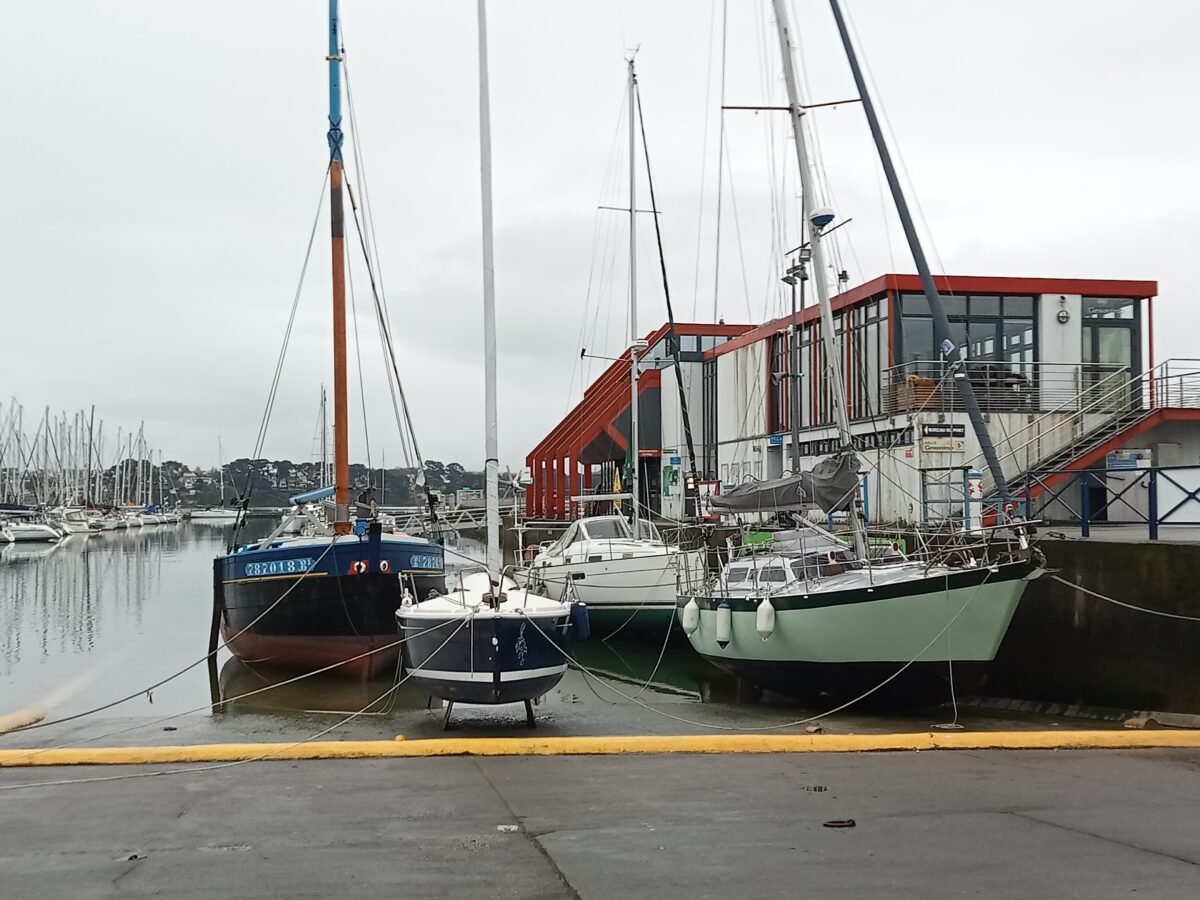
To protect the environment, it is essential to carry out your careening in specially equipped technical areas, such as those in Brest marinas.
The Marina du Moulin Blanc has a careening slipway and a careening area. The Marina du Château also has a careening area. These careening areas are equipped to collect and treat run-off water in order to limit pollution.
When sanding the hull, be sure to collect any toxic residues (such as paint residues, used paintbrushes or empty pots) and take them to the clean points provided by the Brest marinas at the careening areas so that they can be properly treated. ♻️
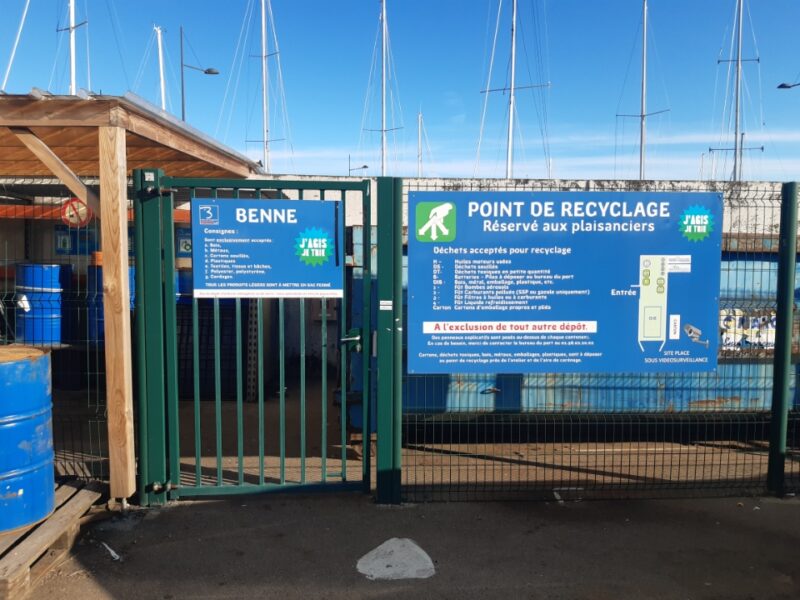
If you do the careening yourself, avoid windy days. This will minimise the dispersion of harmful dust in the air and on the ground.
Finally, a simple piece of advice: sail regularly! ⛵
This limits the attachment of marine organisms to the hull, reducing the frequency of careening.
Choosing an ecological antifouling
Antifouling is essential for protecting your boat's hull from marine organisms. However, most products contain substances that are toxic to the environment. Fortunately, there are environmentally-friendly alternatives.
You can opt for antifoulings based on natural ingredients, which are better for preserving marine life while remaining effective. The fish will thank you!
Maintaining your engine to reduce pollution
A well-maintained engine consumes less fuel and pollutes less.
To limit your impact on the environment, make sure you carry out regular checks: cleaning filters, changing oil, checking injectors, etc.
Careful maintenance reduces pollutant emissions and extends the life of your engine.
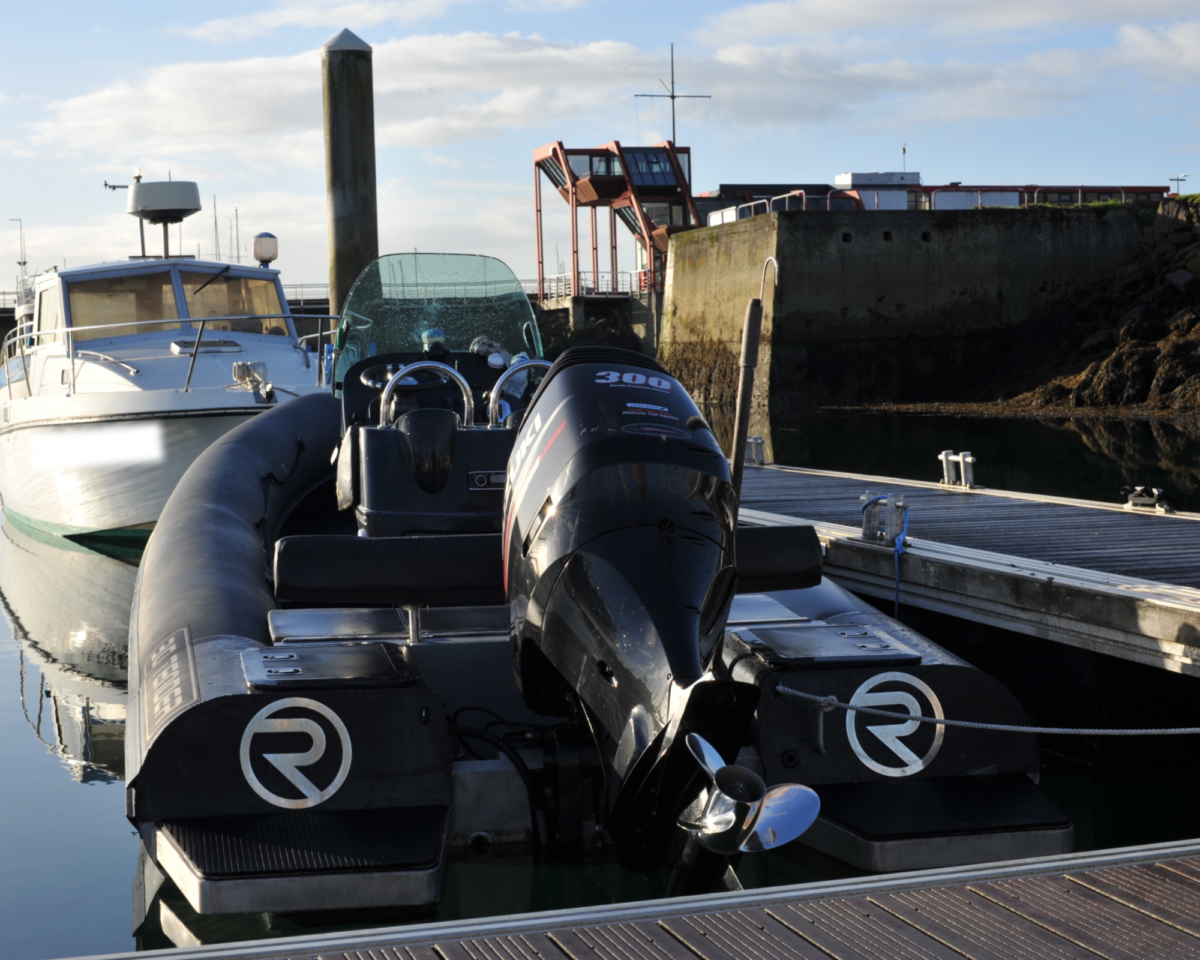
Beware of oil pollution
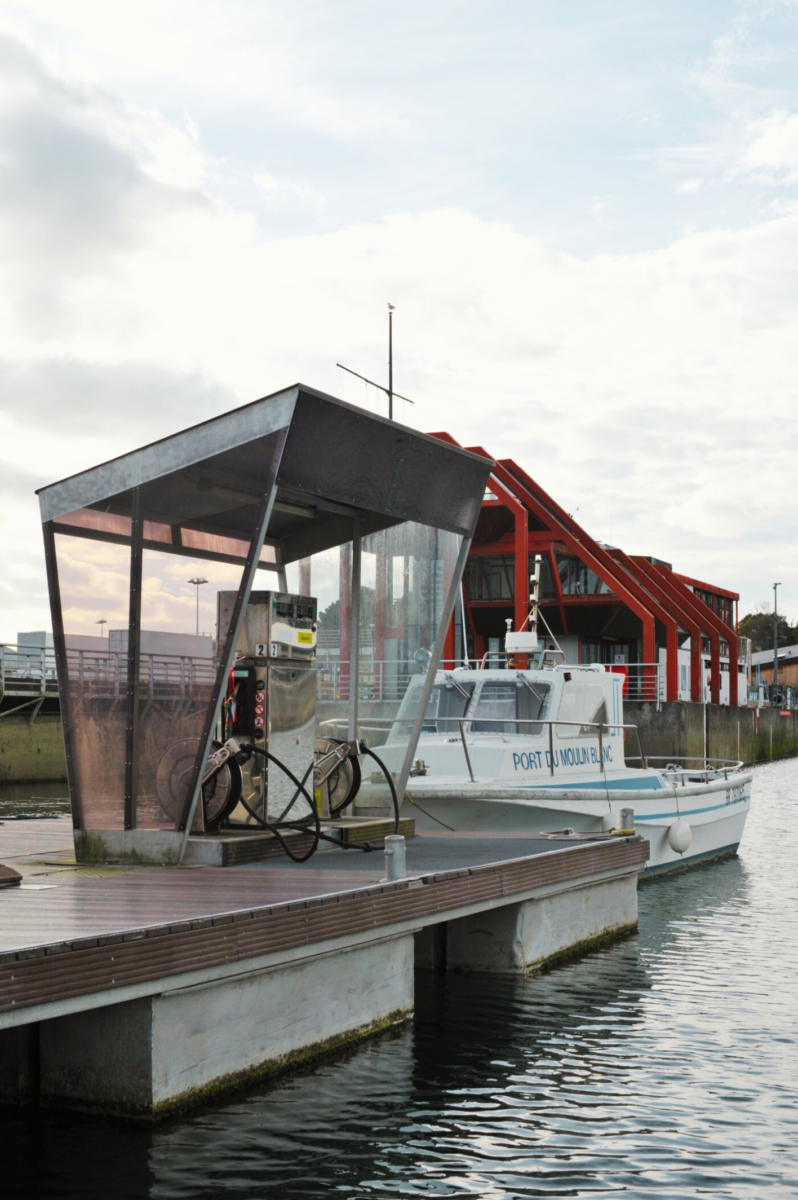
When filling up your tank at a petrol station, be careful not to spill hydrocarbons into the water. These spills, even in small quantities, have a devastating impact on marine ecosystems.
The Brest marinas sell reusable absorbent sheets. These can be used to catch any fuel drops that may fall into the water during refuelling manoeuvres.
You can buy one at the harbour office.
The port teams are trained in the fight against accidental oil pollution, but it is important that everyone feels concerned by the subject and leaves the port as clean as possible.
Ecogestures for yachtsmen on the pontoon
When you're moored at the pontoon, a few good practices can go a long way towards protecting the environment. Take advantage of the facilities available to you to reduce your ecological footprint, and adopt simple but effective actions to help preserve the oceans.
Use the harbour toilets when you're docked
Brest marinas have toilet facilities, so why not make the most of them 😉
By using the harbour toilets rather than those on your boat, you avoid discharging waste water directly into the sea. This simple gesture helps to preserve water quality and protect marine biodiversity.
It's also more comfortable and pleasant than having to manage your boat's black water tanks.
In short, a small ecological gesture that's good for the planet!

Emptying tanks at grey and waste water pumping stations

When you're docked, remember to empty your grey water and waste water tanks at the dedicated pumping stations. Brest Marinas are equipped with these facilities to enable you to treat your waste water responsibly.
Whether for dishwater, shower water or black water, using these stations helps to limit pollution in port areas and preserve marine ecosystems. 💧
It also prevents the dispersion of harmful substances that can disturb underwater fauna and flora.
You can ask harbour agents where the stations are located and get practical advice on how to use them.
Reducing energy consumption on board
Adopting eco-actions for yachtsmen, such as producing and consuming energy more responsibly, is essential to reducing the ecological impact of your boat.
Consider installing solar panels or a small wind turbine on board. This equipment produces renewable energy to power your appliances without the need for a fuel-guzzling generator.
Another important point: invest in durable, high-performance batteries. These will store the energy produced by your solar panels or wind turbines, giving you greater energy autonomy.
Thanks to these simple gestures, you can play an active part in preserving the marine environment, while enjoying greener sailing.

Brest marinas have also been running a campaign to unplug boats for several months now. The aim of this approach is to significantly reduce energy consumption, and to ensure the safety of boats and yachtsmen by avoiding the risk of fire. 🔌
Reducing water consumption
When using the port showers, remember to limit your water consumption.
On board, use water-saving shower heads and check your plumbing system regularly for leaks to avoid wasting water.
On pontoons, don't leave your water hose connected when you're not using it. Don't let the water run for nothing, even for a few minutes.
Less wasted water and smarter energy consumption is good for the environment… and the budget! 💡💦
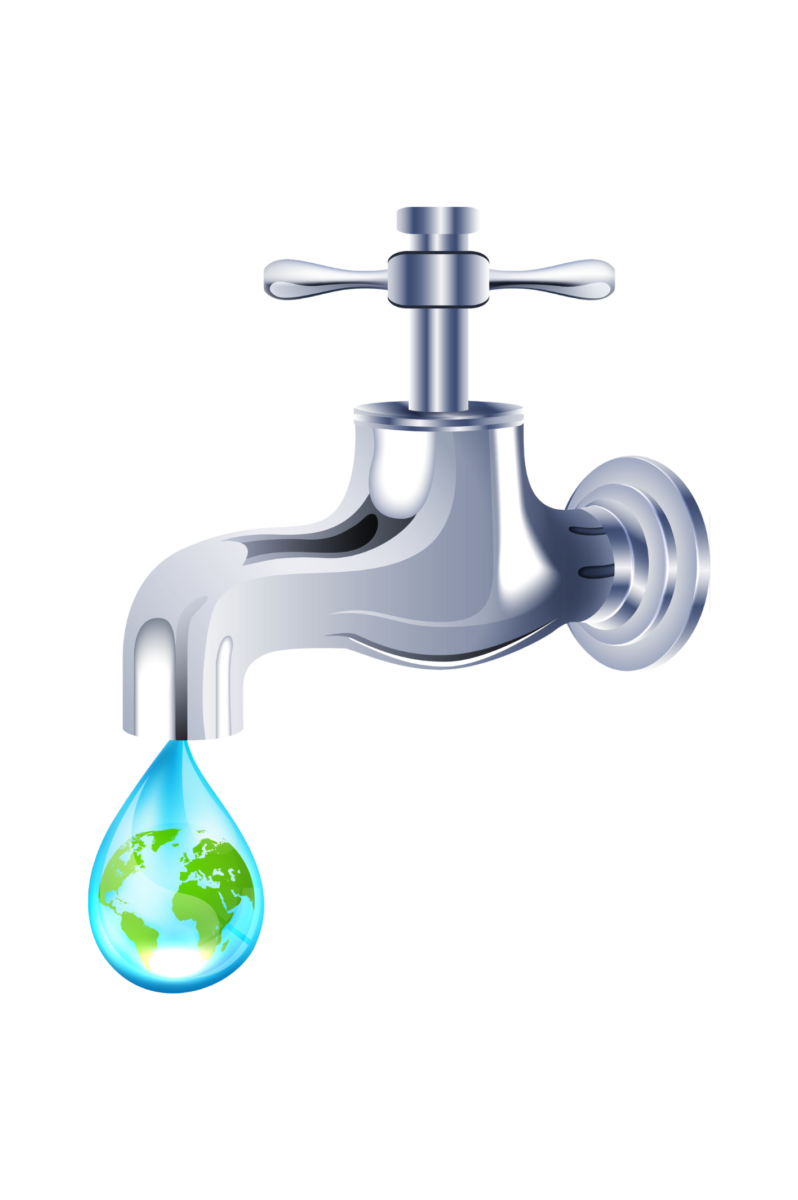
Adopting responsible behaviour at sea
Ecogestures for yachtsmen don't just happen on the pontoon. It's also at sea!
Sailing at sea is a privilege, but it's essential to respect this fragile environment. As a yachtsman, you can adopt simple actions to preserve marine biodiversity and reduce your ecological impact, while enjoying your sailing to the full.
Managing waste on board a boat
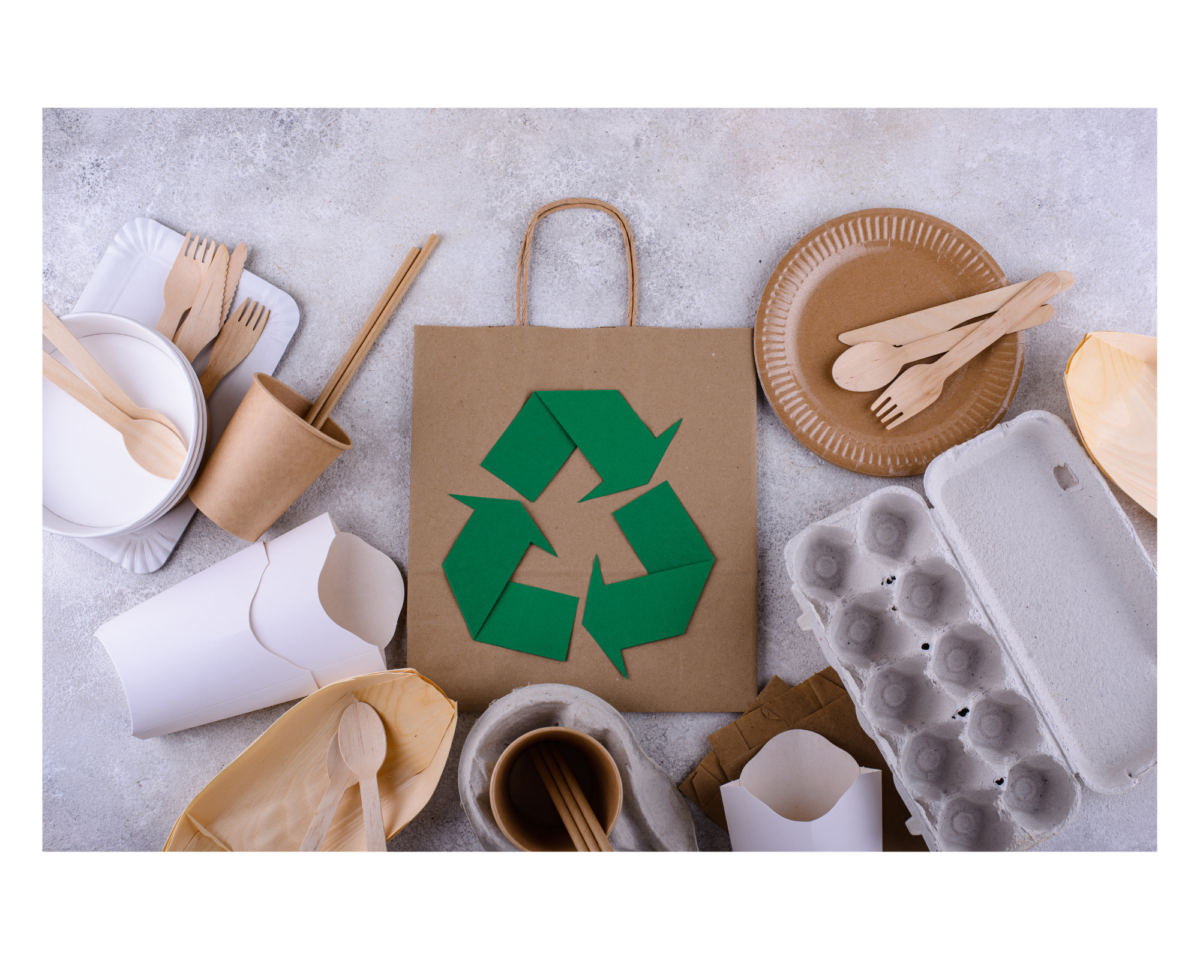
When you're at sea, it's important to manage your waste responsibly.
The first step is to avoid taking over-packaged products with you.
💡 Before setting off, remember to remove all unnecessary packaging and give preference to reusable containers.
On the boat, set up a selective sorting system. A small bin for plastic, another for household waste, and that's it! 🗑️
Back in the harbour, all you have to do is put your sorted rubbish in the appropriate bins or at the clean point.
If you smoke on board, remember to use an ashtray or pocket ashtray to prevent cigarette ends ending up in the water. Even in small quantities, cigarette butts are a major source of pollution for the oceans. The marinas in Brest provide free pocket ashtrays for boaters. Make the most of them!
Use non-polluting products to clean your boat
There are many ecological alternatives available today that are just as effective for maintaining your boat without harming the environment.
Choose non-polluting detergents that contain no phosphates or other chemicals that are harmful to marine life.
You can even make your own cleaning products, just like at home, using white vinegar, bicarbonate of soda or black soap.
Your boat will stay clean, while respecting the planet! 🌍

Paying attention to your anchorage
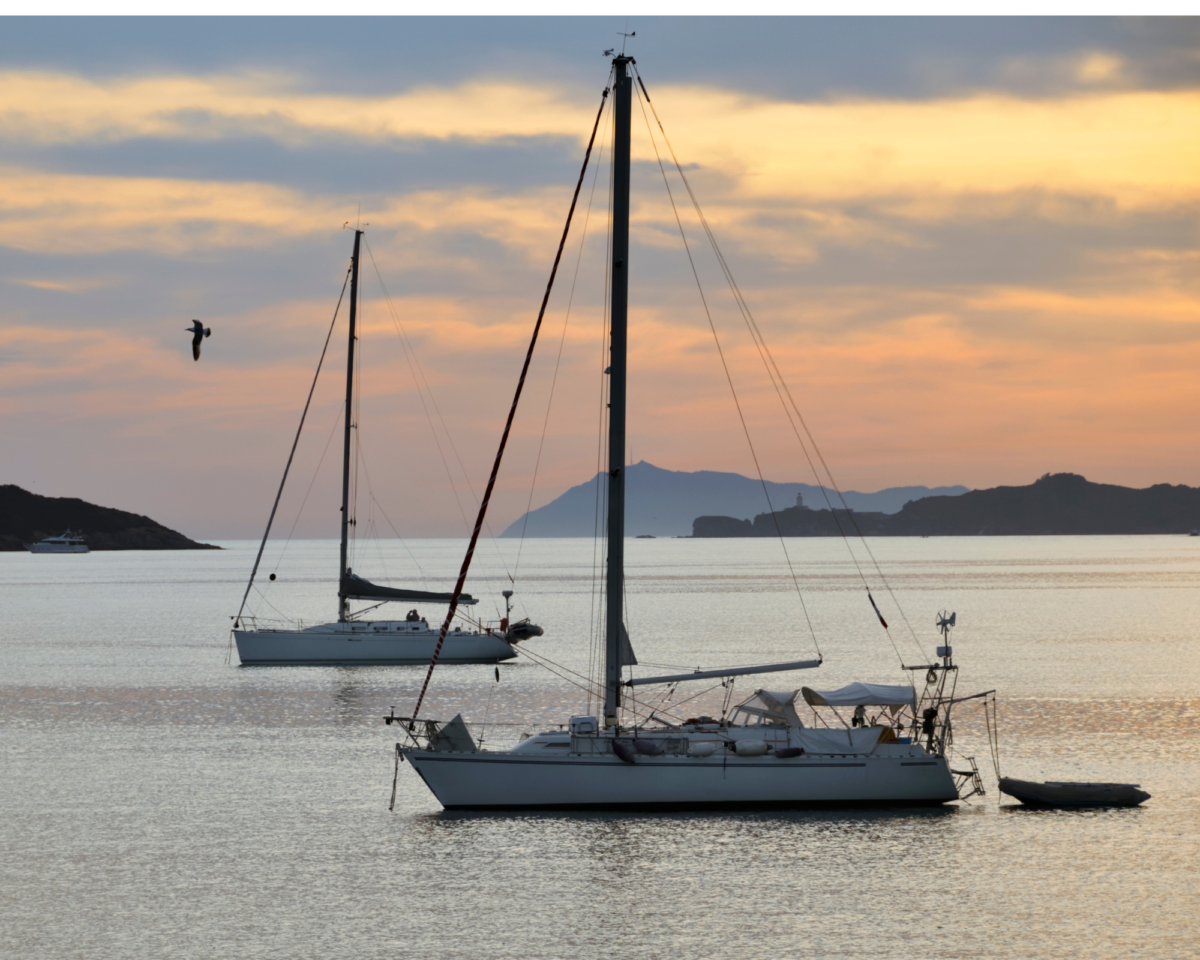
When choosing your anchorage area, pay attention to where you drop your anchor. Choose sandy areas, which can be identified by their light colour, to minimise the impact on the seabed.
You can also use a buoy rope, a system that makes it easier to pull up the anchor without tearing anything.
Finally, in organised anchorage areas, prefer fixed buoys. This preserves the seabed while simplifying your anchoring manoeuvres.
Ecogestures for yachtsmen make an active contribution to preserving the oceans, but you can also go further by taking part in concrete actions. Why not join a litter pick to further protect marine ecosystems? Organisations such as Surfrider Foundation and Océanopolis Acts regularly organise events to raise awareness and mobilise people to protect the oceans. A great opportunity to act together for the environment! 🌊💪
Preparing your boat handling for winter ashore
The arrival of winter often means putting your boat ashore to protect it from the rigours of the season. But for this operation to go off without a hitch, it's essential to be well prepared for handling your boat. From the equipment you need to bring to the safety instructions, not forgetting the key stages to follow, good organisation will help you avoid stress and unforeseen events. Here's our advice on how to prepare for taking your boat out of the water.
Preparing for your boat handling appointment
The key to successful handling: anticipation and organisation!
The first step is to prepare your boat for the winter by de-reefing the sails and removing any equipment that could blow away. You should also think about reassembling the probes so as not to damage them during handling.
Handling appointments are made directly at the Brest marinas offices. At this point, the port team will need all the essential information about the boat:
- length,
- width,
- draught,
- weight,
- any other information useful to the handling team.
Prior to handling, it is essential to plan for the equipment needed to maintain and care for the boat:
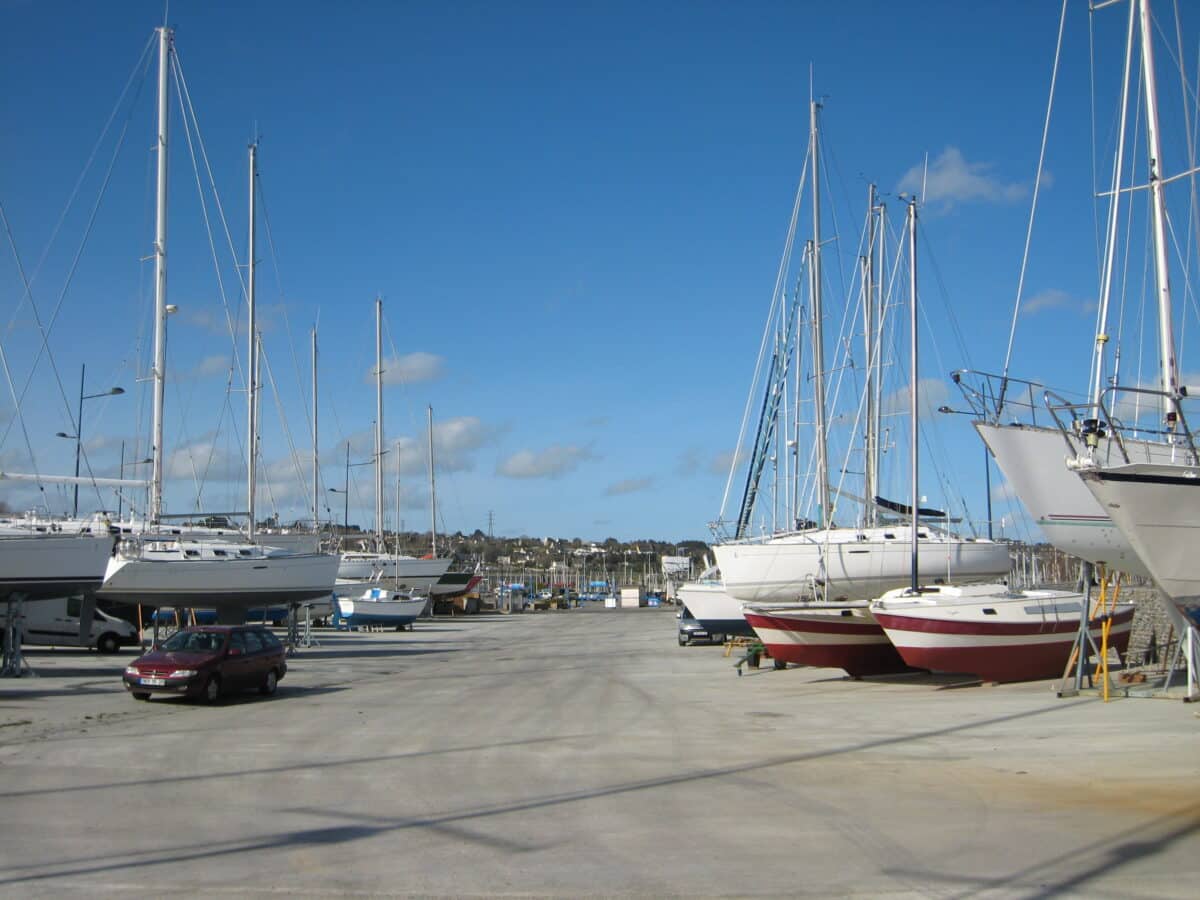
- A ladder to get on and off the boat once it is secured on land.
- A water hose with a gardena nozzle.
- An extension lead with a European plug. Please note that this extension lead must be in good condition.
- Any small tools or fairing equipment you may specifically need.
- A high-pressure cleaner.
You can hire a high-pressure cleaner at each of Brest marinas. You need to specify this when making your handling appointment.
What should you do when handling your boat?
On the day of the handling operation, it is preferable for the yachtsman to switch his radio on channel 9 to be in direct contact with the handling team. This will enable everyone to coordinate the operation as effectively as possible.
On the day of handling, arrive at the handling dock on time. It is important to follow the instructions of the teams on site to guarantee the safety and efficiency of the operation.
When lifting your boat, pay particular attention to the positioning of the straps and skids. Clearly indicate to the team where they should be placed to avoid damaging the hull or appendages (keel, rudder).
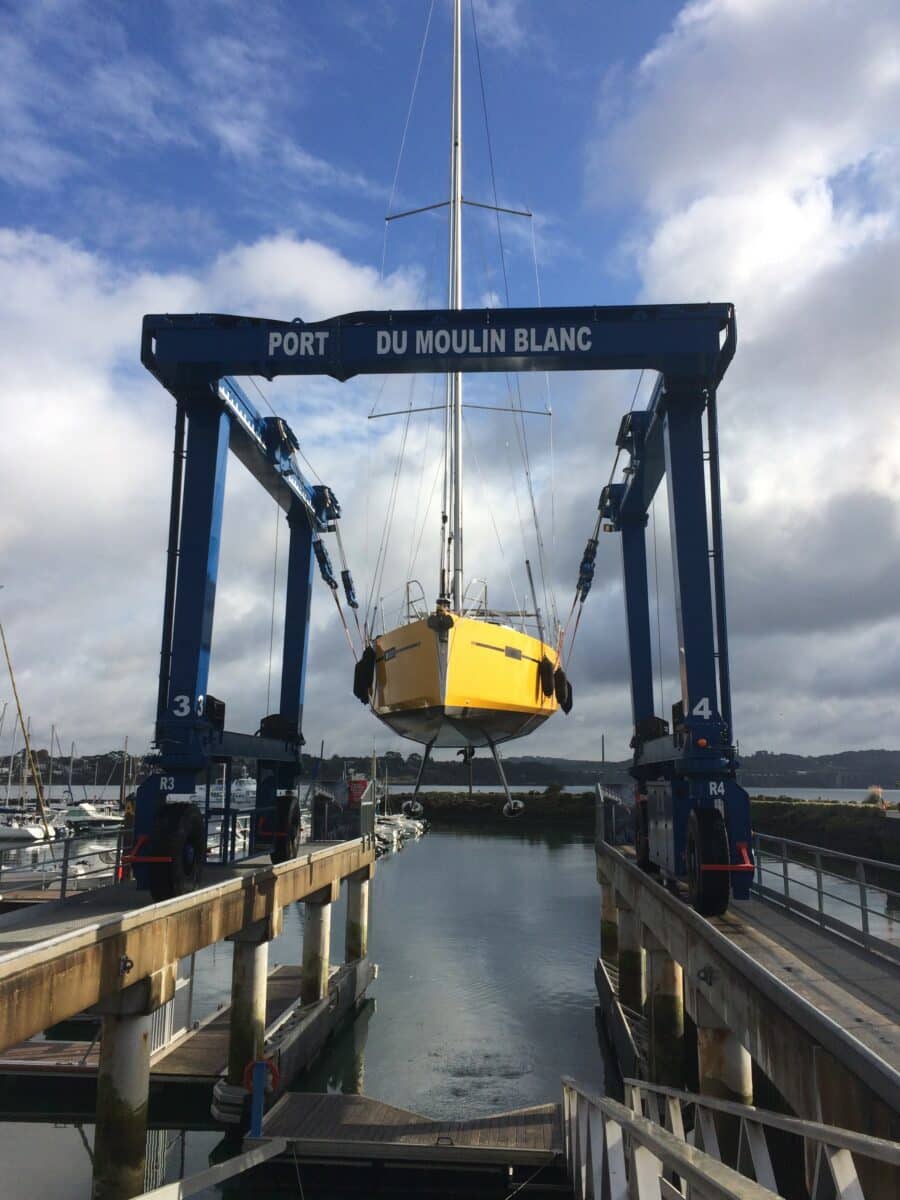
The teams at Brest marinas are there to help you, but your precise instructions are crucial if everything is to run smoothly.
Safety during handling operations
Safety is an important consideration during these operations. Never move under the lifting equipment, it is dangerous and forbidden.
Only the cradles and crutches supplied by the port are authorised. In fact, these are the only ones that the teams know are perfectly reliable and know how to use. Do not use any personal equipment to provide additional support. If you have any questions or specific requirements in this area, it's best to ask the harbour agents.
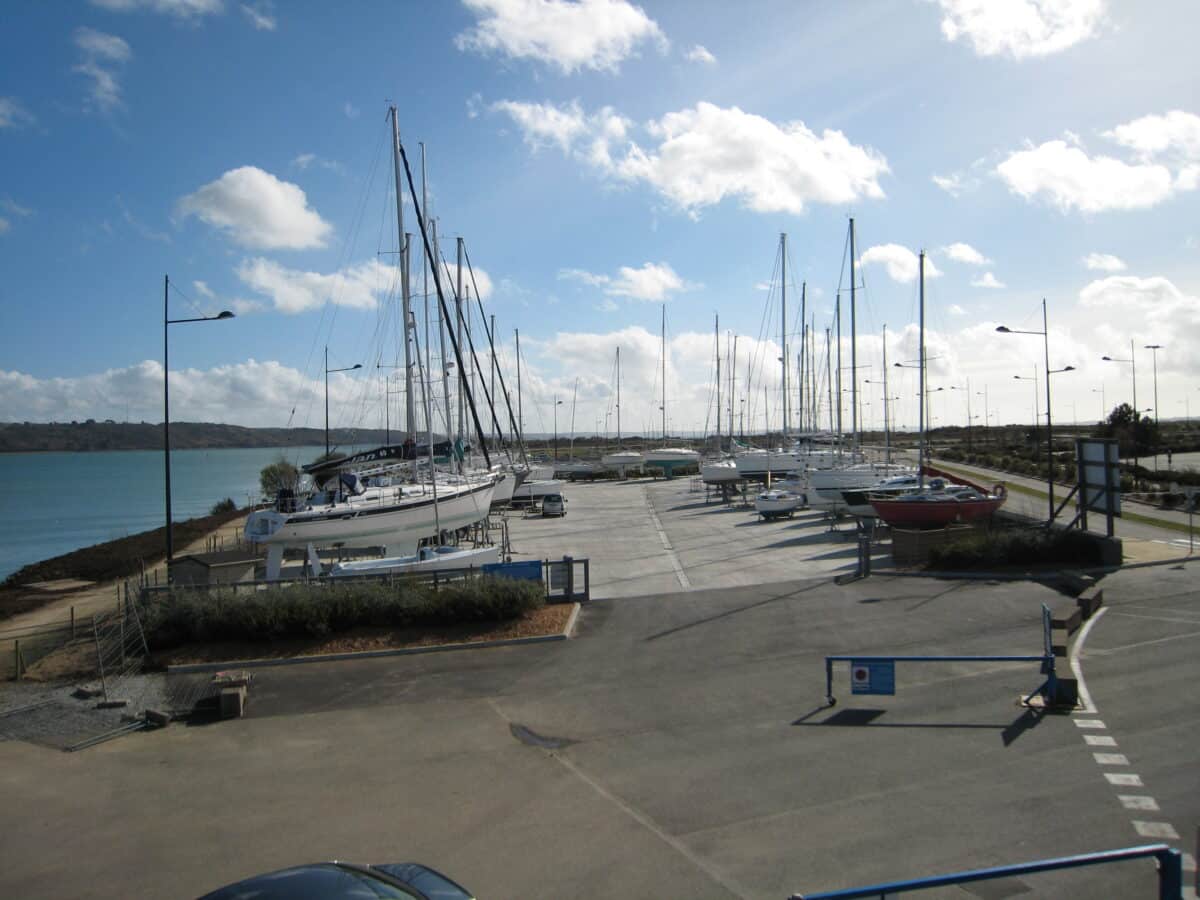
Certain activities, such as sandblasting, hydrogumming or using a paint spray gun, are strictly forbidden in careening areas for safety and environmental protection reasons. You should also choose antifouling products that do not contain tributyltin (TBT), a harmful product that is now banned.
In addition, Brest's marinas have been certified as Clean Harbours active in biodiversity, so it's important to make good use of the waste collection facilities available to you.
Finally, follow the traffic rules for the open spaces and careening areas: speed is limited to 10 km/h, and parking is only authorised outside these zones. Vehicle access is tolerated only for people working on their boat, and only for loading or unloading equipment. When the wind exceeds 40 knots, we strongly advise against using the careening area.
Wintering your boat ashore is a crucial stage in protecting it and preparing it for the next season. By ensuring that you prepare properly for handling your boat, you can guarantee a fast, safe and efficient operation. Don't forget to follow the safety instructions, both for yourself and for other boaters. Your boat will thank you, and you'll be able to take to the sea again in the summer months with complete peace of mind!
Heritage Days 2024 in Brest: 6 visits near the marinas
This year's Heritage Days will once again focus on some of Brest's most important sites. They take place on Saturday 21 and Sunday 22 September. This will be an opportunity for young and old alike to discover the city's heritage through guided tours, exhibitions, film screenings, workshops and re-enactments. With such a wide range of activities on offer, here is our selection of places to visit near the marinas during the Heritage Days 2024 in Brest.
The youth hostel
Located at the Moulin Blanc marina in rue de Kerbriant, the youth hostel has been a listed building since 2018. Every year, it receives numerous visits from architects and architecture students.
During the Heritage Days, the Compagnie Qui S'y Colle will be welcoming you with a quirky and humorous tour of this unique building.
The tour is suitable for all ages from 6 upwards.
Information and booking on 02 98 00 80 80 or on the town's website.
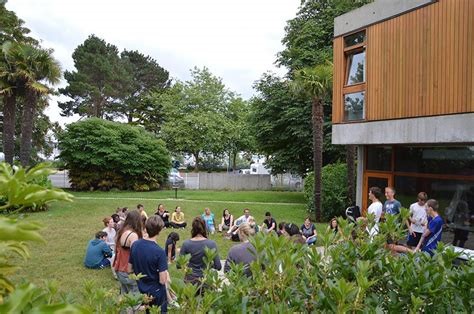
Brest National Botanical Conservatory
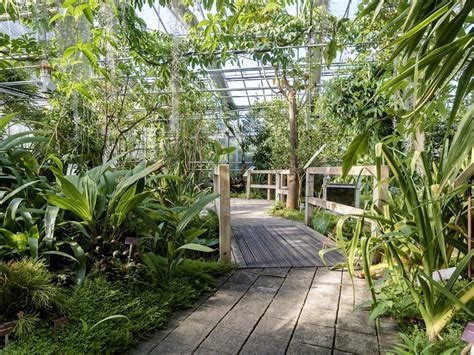
Home to a unique collection of rare and endangered plants, the Brest National Botanical Conservatory's tropical greenhouse is a haven for fascinating flora from the four corners of the globe.
Take advantage of Heritage Days for a guided tour, and explore every nook and cranny of the greenhouse, where each plant tells the story of threatened biodiversity and the passion for saving species. A not-to-be-missed visit for lovers of nature and discovery.
Information and booking on 02 98 00 80 80 or on the town's website.
The "jardin extraordinaire"
Have you ever seen a garden on a cliff? Well, you can at Brest's commercial port!
This cliff garden, tended by volunteers, is home to numerous plant species from all over the world.
On Heritage Days, you can find out more about it by taking part in a guided tour.
Information and booking on 02 98 00 80 80 or on the town's website.

Heritage boats
Along the Quai Malbert, the spotlight will be on the heritage boats. They regularly sail in Brest bay, and even further afield, but it's at the pontoon that you can visit them during the Heritage Days.
La Recouvrance
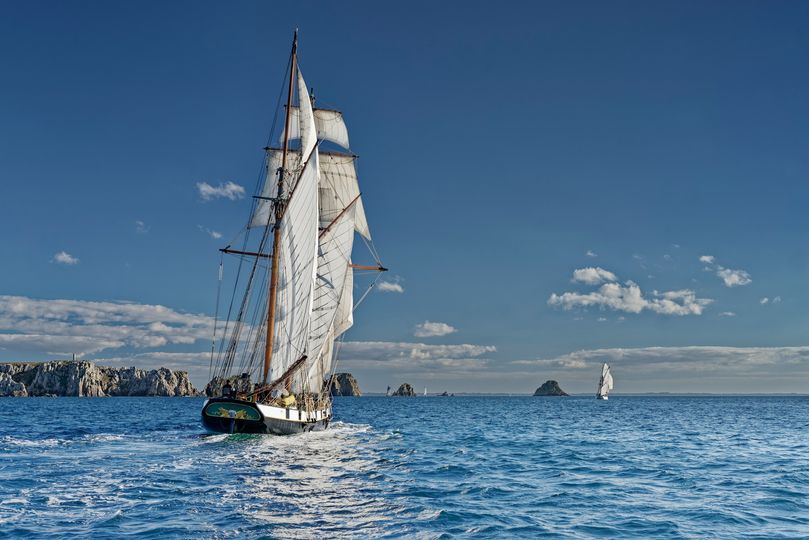
An ambassador for the city of Brest, La Recouvrance is a replica of a 19th-century aviso used to transmit urgent mail and notices.
In season, La Recouvrance offers half-day, full-day and 2 to 10-day cruises.
Come along to the Quai Malbert and let yourself be guided by the sailors, who will tell you all about the schooner's little secrets.
Notre-Dame de Rumengol
Listed as a historic monument since 1990, this boat was originally a gabare used to transport wood, wine, onions and salt.
Nowadays, Notre-Dame de Rumengol sails to introduce adventurers to traditional sailing.
The crew will be delighted to welcome you and tell you all about this much-loved boat.
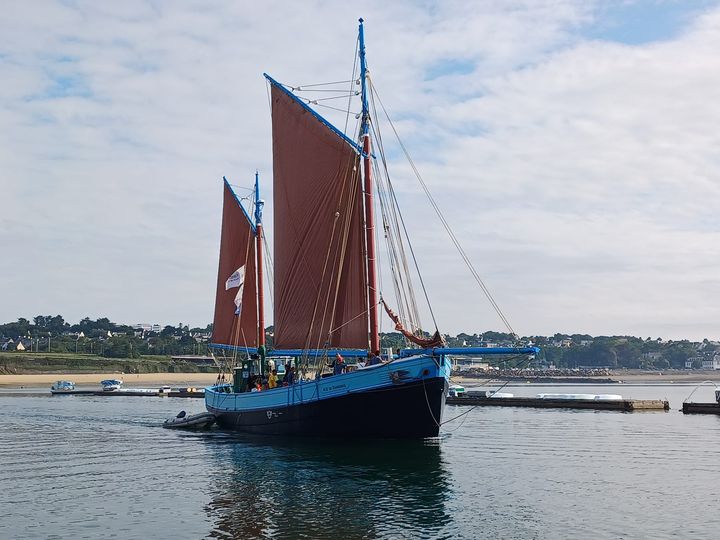
La Bergère de Domrémy
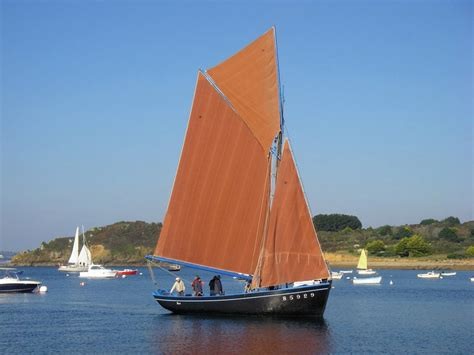
This shellfisher in Brest harbour is also listed as a historic monument. Throughout its history, it has been used to dredge scallops and transport maerl and seaweed.
Today, it is possible to sail on board to discover the bay.
The Chantier du Guip
This is THE place for building and restoring wooden boats.
Located on the Quai Malbert, opposite La Recouvrance, one of the shipyard's original constructions, the Guip shipyard has seen heritage boats, workboats and classic yachts pass through its hands. On the occasion of Heritage Days, the yard is opening its doors to the public to help them discover this very special craft carried out by passionate craftsmen.
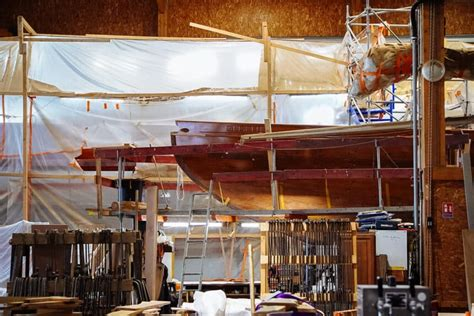
Brest castle
The Brest castle is one of Brest must-see places. Here you can discover the history of Brest and the château, a room dedicated to the La Pérouse expedition and an impressive collection of figureheads.
But during Heritage Days, you can also visit places that are usually closed to the public, such as the Maritime prefecture and the underground casemates.
Heritage Days 2024 in Brest: map of events
To make sure you don't miss out on any of this year's events, take a look at the interactive map. You'll find all the information you need to organise your visits.
Preparing your boat for winter afloat: 8 Essential Steps
As winter approaches, many boat owners realise it's time to get their boats ready for the harsh season ahead. While some prefer to take their boat out of the water and put it ashore, others choose to leave it afloat, which can be a very good option if certain precautions are taken. Leaving a boat in the water over winter involves a series of checks and adjustments to avoid any nasty surprises. In this article, we take a look at 8 essential steps you can take to prepare your boat for winter afloat.
1: Secure the mooring
The first step in preparing your boat to spend the winter afloat is to secure its mooring. A solid mooring is the key to preventing the boat from being damaged by water movements, particularly during winter storms. Make sure your mooring lines are in good condition, with no signs of wear or fatigue.
Don't forget to double up on the mooring lines: a main mooring line and a spare line in case the main line breaks.
Spread the attachment points over several cleats, to reduce the tension on each mooring line, and therefore the risk of breaking.
2: Check the fenders
To protect your boat's hull effectively, it is essential to use fenders that are in good condition and in adequate quantity. Fenders that are too damaged should be replaced.
Make sure they are securely fastened to prevent them from falling into the water.
Place fenders between your boat and the one moored next to it. This will give your hull extra protection, particularly during gales or manoeuvres in port.
Boaters can also install bumpers and other protection directly on the pontoon to increase the overall safety of the boat's hull.
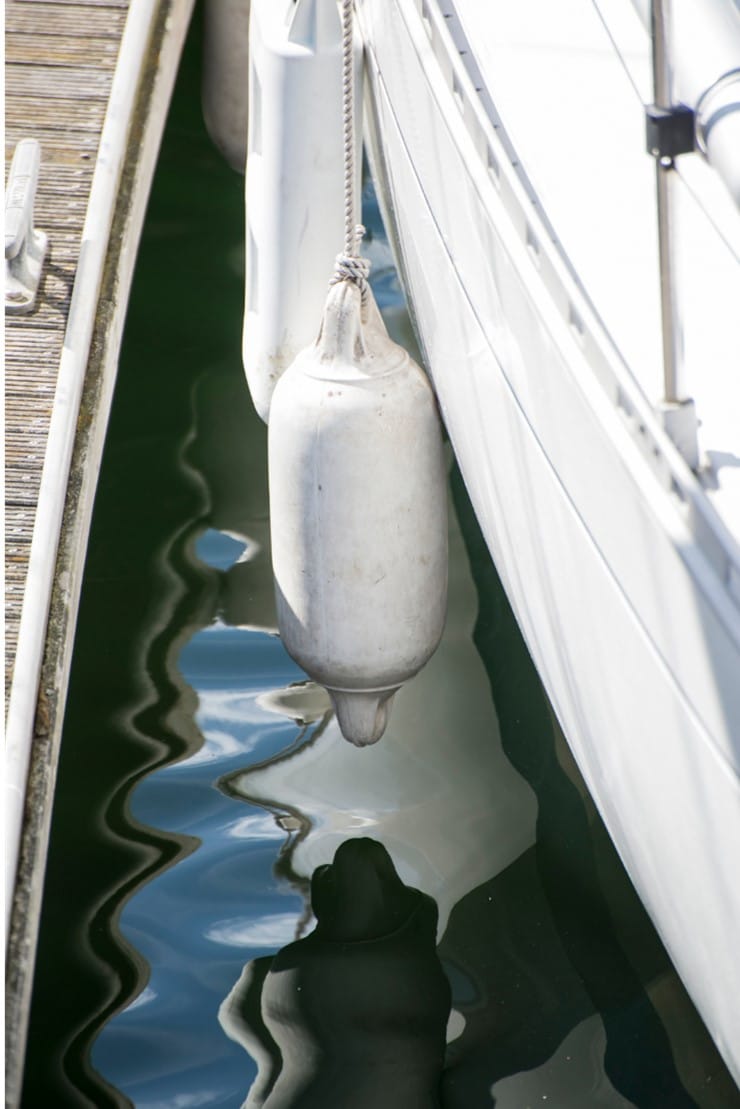
3: Remove the sails
Sails are among the most exposed and vulnerable parts of a boat during winter weather. It is strongly recommended to remove the sails before winter arrives and store them in a dry, well-ventilated area.
Not only does this prevent the sails from unrolling and tearing in the wind, it also protects them from damp and mould, prolonging their life.
If you still decide to leave the mainsail in place, make sure it is carefully furled and protected by a strong cover. Make sure the cover is securely fastened to prevent it from catching in the wind. You should also check that the sail is perfectly tensioned, and avoid any folds or excessive tension, which could cause serious damage.
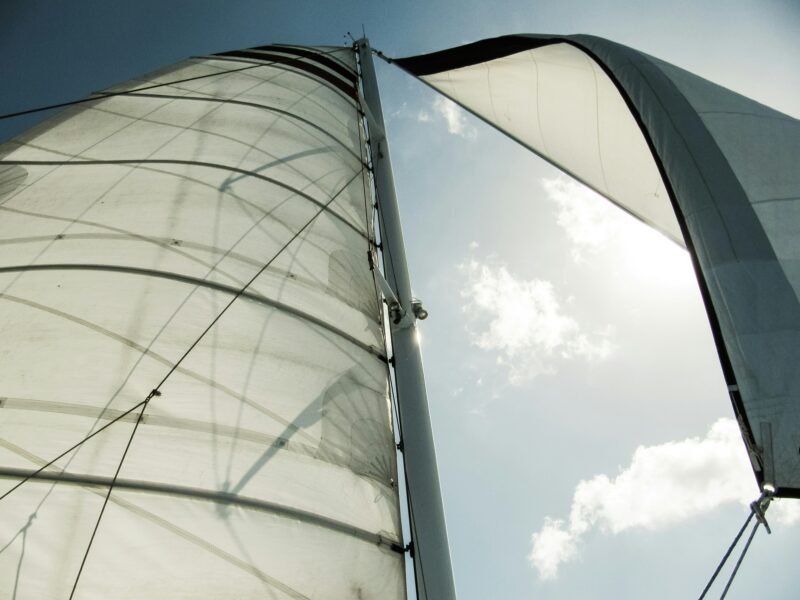
4: Remove anything that catches the wind
One of the golden rules for getting your boat ready to spend the winter afloat is to minimise the wind load. The more parts are exposed to the wind, the greater the risk of damage, especially in stormy weather. Anything that can be removed from the deck should be. This includes, in particular, biminis, awnings, sunscreens, as well as decorative elements or non-essential accessories.
Solar panels should be securely fixed or removed if possible, especially if they are mounted on tilting brackets. Don't forget to check antennae and other outdoor electronic equipment, which can become detached in the wind.
5: Tighten the halyards
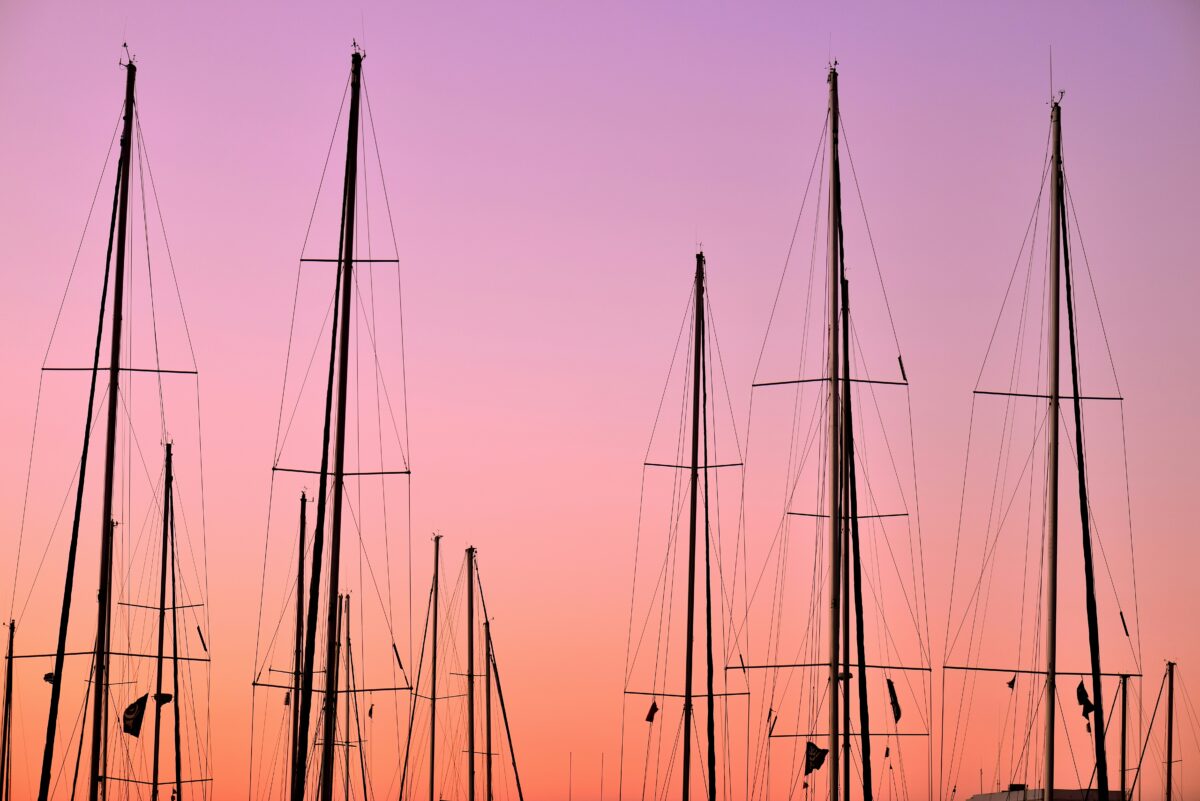
Halyards are often overlooked during winter preparations, yet they can cause significant problems if not properly tightened. Loose halyards can not only create a lot of noise by slapping against the mast in the wind but they can also wear out prematurely.
To avoid this, take the time to tighten all halyards firmly.
6: Disconnect your boat
Boats are not allowed to remain connected to the electrical network if no one is on board.
Disconnecting your boat reduces the risk of fires, prevents battery overload, and also helps save energy.
Sensitive to these safety issues, Brest's marinas have been running a campaign to unplug boats for several months now.
7: Leave your ladder free for use
Emergency ladders are regularly installed on pontoons. However, leaving your boat's ladder accessible and easy to unfold is a small, simple gesture that enhances general safety in the harbour.
A person who falls into the water can easily climb back on board a boat if the pontoon ladder is a little too far away.
This small gesture can make a big difference in the event of a problem, enabling rapid intervention.
8: Regularly check your boat
Even in winter, it’s important to visit your boat regularly. Make sure the mooring remains secure and that no incidents have occurred. This will help you quickly spot any deterioration or anomalies.
Similarly, if you notice an issue with a neighbour’s boat, promptly inform the marina office. A swift action can help prevent accidents and ensure the safety of all marina users.
Preparing your boat for winter on the water requires attention to details that may seem trivial but are crucial for ensuring the safety and longevity of your equipment. Adopting these eight steps will help you find your boat in optimal condition come spring, ready for new nautical adventures.
Use of the south slipway at Moulin-Blanc marina
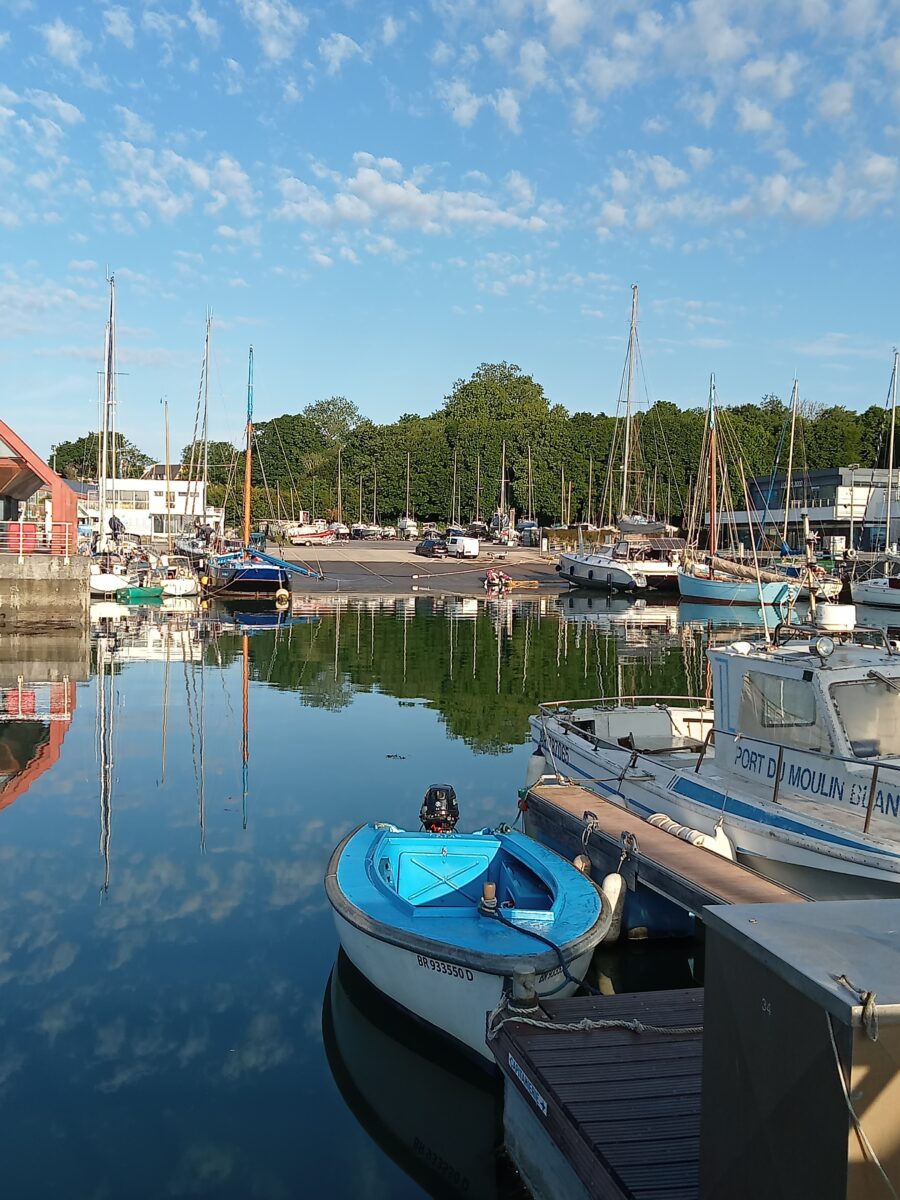
Many pleasures sailor take advantage of the slipway to get their work underway. Here's a useful summary of the Moulin-Blanc slipway.
The careening slipway at Moulin-Blanc is an essential maritime facility for boat maintenance and repair, accessible to both regular users and visitors. There are two areas: a 360 m² area on the harbor office side and a 570 m² area on the north side. Here's a detailed explanation of how it works.
What is a slipway ?
A slipway is a harbor infrastructure specially designed to allow boats to be put out to dry for maintenance, repair or renovation operations. These operations are essential to guarantee the safety and performance of ships, by eliminating corrosion, repairing damage and applying new coats of paint.
Functioning of the slipway :
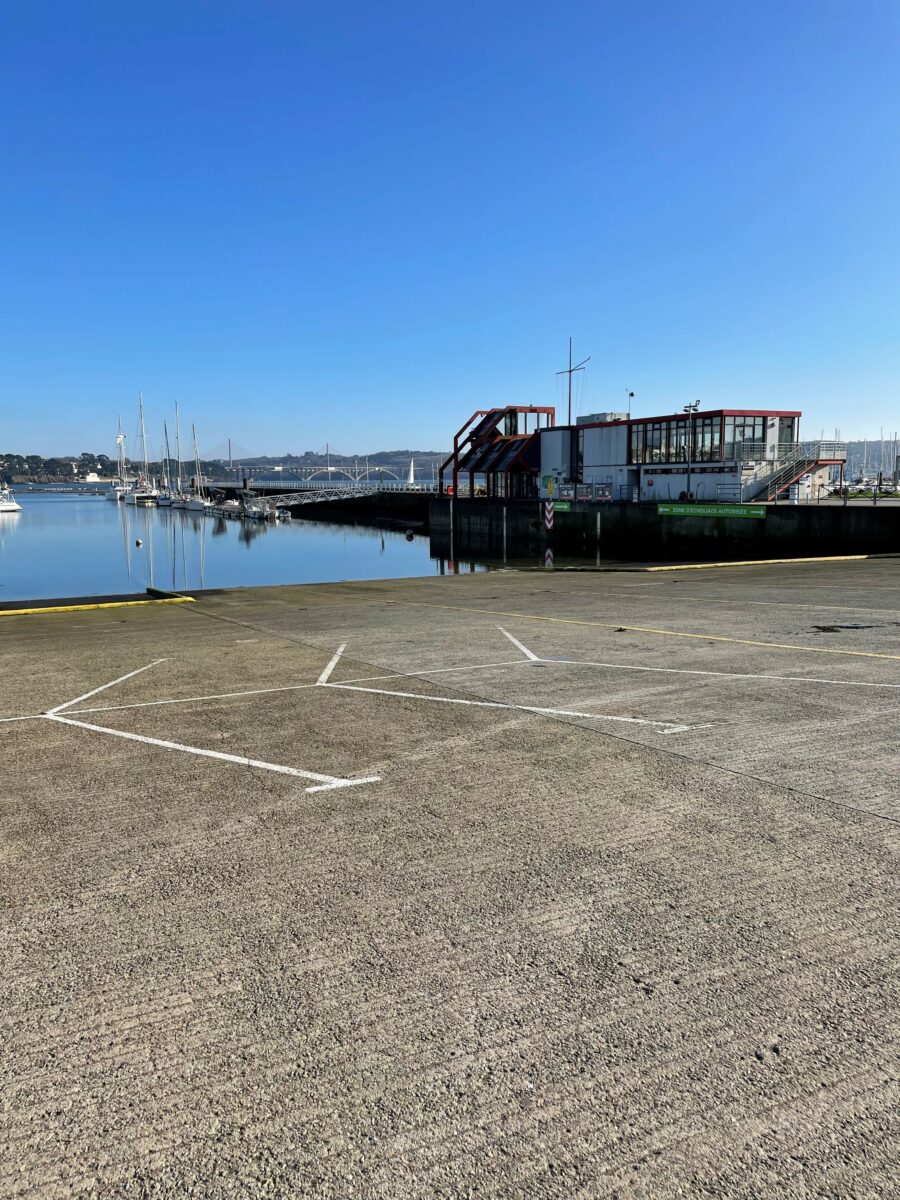
Access to the slipway is free. However, access to the slipway is subject to availability. Boats enter the slipway at high tide and must be correctly positioned and safely moored at low tide. The slipway consists of two areas separated by a yellow concrete bead and a collection channel. Careening can only be carried out in one of these areas. It is essential to be well beached to allow several boats to use the slipway simultaneously. Crutch boats are positioned in the center, leaving the quay space available for keelboats.
Once the boat is in position, the pleasure sailor waits until the tide is low enough to start work. When the tide goes out, an initial message announces the imminent washing of the area to remove the marine silt. This non-polluting deposit is returned to the sea. Next, the gutter and pumping station become visible, and emptying begins, draining the water directly into the sea. If careening work is started before authorization, the waste is discharged into the sea untreated, polluting the harbor waters. A second message indicates the availability of the area to begin careening operations.

As the tide rises, a third message warns that the hold is about to be rinsed, leaving a few minutes to stow the equipment. The fourth message, just before the washing water arrives, signals that it's time to finish. This water, pumped directly into the harbor, will return there after treatment.
Macro-waste, too heavy to be carried away by the water, must be collected and deposited in the skip provided for this purpose at the top of the hold. Waste such as paint cans, rollers and soiled paper should be deposited at the port's waste disposal center and never mixed with organic waste, as it is dangerous and requires special treatment.
Using the badge:
To use these services, you need to load a card with water, electricity or high-pressure washing units. This card, available for 10€, can be used at the kiosks located on either side of the slipway. The high-pressure washers operate on a fixed rate per fortnight. The badge can be purchased or recharged at the harbor master's office.
- Make sure that the emergency stop is not engaged and that the circuit breaker is switched on.
- Present the card to the reader, leaving it in contact throughout the operation.
- If the card is valid, a beep will sound. If it is invalid or has no units, a ‘pin pon pin’ signal will sound; go to the Port Office for assistance.
- To start the dispenser or washer, press the corresponding button for one second. A double beep will confirm the operation.
- Collect your card once the operation is complete.
- Please store the nozzles and hoses after use.
Key points to respect:
- Moor your boat in the right place.
- Respect your neighbors and sort your rubbish.
- Listen to and scrupulously follow the messages broadcast.
- Do not start work until authorized to do so.
- Use a valid and correctly charged card.
- Make sure your equipment is in good working order.
- Check the circuit breakers before starting work.
- Do not remove the card before completing the selection.
In short, the slipway at Moulin-Blanc is an essential facility accessible to everyone in Brest's marinas, offering a safe and practical place to carry out the maintenance work needed to keep your vessels running smoothly.
Practical Services for the pleasure sailor in Brest
When you make a stopover in Brest, the Marina du Château and the Marina du Moulin-Blanc offer practical services to make your stopover as pleasant as possible. Here's what is available to you:
Bike loan
Explore the city and its surroundings at your own pace with the electric bikes available at the marinas. These bikes can be used to get around and sightsee throughout the day.
Taxi Shop by Carrefour Contact
Need to go shopping? No problem! Carrefour Contact offers a practical shopping taxi service. They'll pick you up directly from the marina and bring you back once you've done your shopping, giving you peace of mind even if you don't have your own means of transport.
Taxi assistance at the Harbour Master's Office
If you need a taxi, go to the harbour master's office, where you can ask for one to be called for you. A practical service for getting around town or to other destinations of your choice.
Fuel Station and Boat Lift
For your fuel needs and boat lifting services, a fuel station and boat lift are available at the marinas, providing you with all the equipment you need to maintain your boat.
Recycling and Waste Centre
As part of our commitment to the environment, a waste collection centre is available on the careening area, as well as sorting bins near the pontoons. Help preserve our environment by disposing of your waste responsibly.
Space available with high-performance WiFi
Take advantage of the comfortable areas available for you to relax in, with access to high-performance WiFi to keep you connected and plenty of refreshments.
To sum up, whether you need to get around town, do some shopping, maintain your boat or simply relax, the services offered to pleasure sailor are there to meet all your needs and make your stay as pleasant and convenient as possible.
Visit Brest from Marina du Moulin Blanc
Calling at the Moulin Blanc marina and wondering what to do in Brest ?
We suggest you discover the city with two must-see places for an escape between land and sea...
Don't hesitate to go to the harbour office for further informations to make your experience even more enjoyable !
Océanopolis
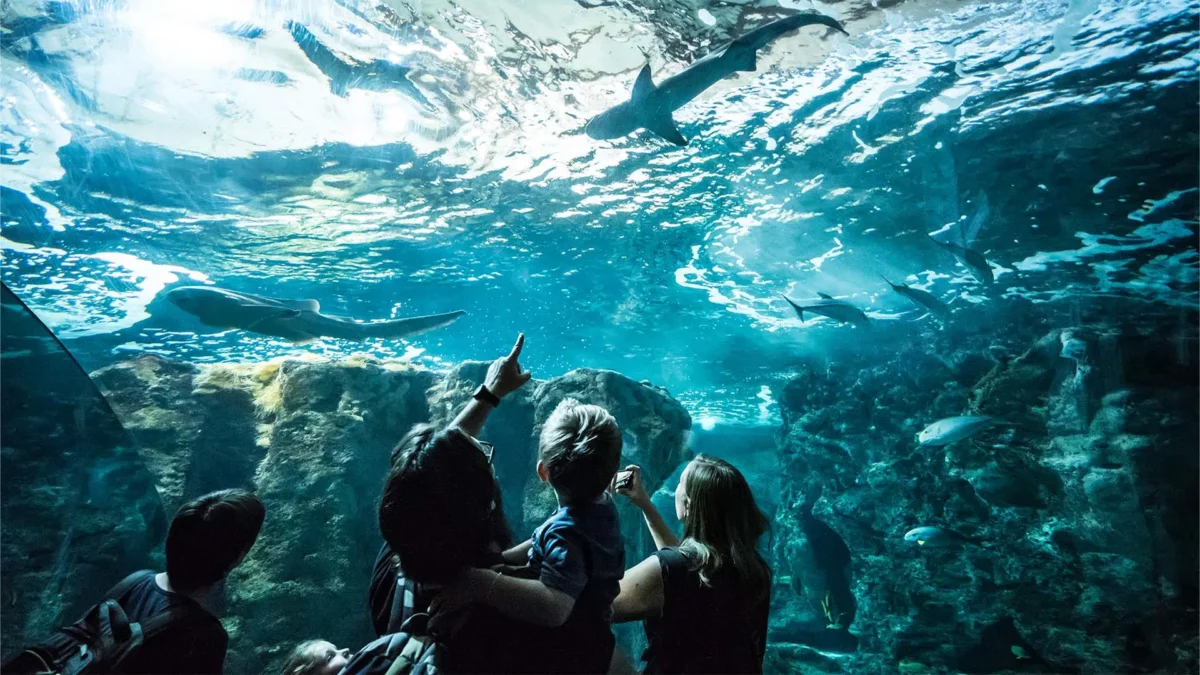
Océanopolis is a national cultural centre dedicated to the ocean, open all year round.
You can discover more than 1000 aquatic species in three area : Brittany, tropical and polar. These three centres bring together a total of around fifty aquariums !
You can also take advantage of the on-site restaurants (hot dishes, sandwiches, salads, desserts…) for your lunch break.
Pratical information :
- Depending on the season, open from 9.30 am to 7 pm, from 9.30 am to 6 pm or from 10 am to 5 pm.
- The site is closed in January.
Prices :
- Adult : €22,90
- Young people (14/17 years old) : €18,50
- Student : €18,50
- Children (3/13 years old) : €14,60
Reduced rates for people with disabilities :
- Adult : €14,10
- Young people (14/17 years old) : €9,30
- Children (3/13 years old) : €9,30
Find all the informations you need on the website of Océanopolis.
Moulin Blanc harbour
If you haven't set your sight on Océanopolis for your lunch break, there are plenty of restaurants in the Moulin Blanc harbour, located right next to Océanopolis by the Moulin Blanc Marina
You can also enjoy the view over Brest harbour during your lunch, and then walk along the harbour towards the Stang-Alar valley.

Brest National Botanical Conservatory
After lunch, enjoy a digestive walk at the Brest National Botanical Conservatory !
Take a trip around the world in the Stang Alar valley as you wander through the conservatory's garden !
You'll discover some 1800 species, and sometimes of the year you can visit the tropical greenhouses, where you'll find a concentration of vegetation unique in France !
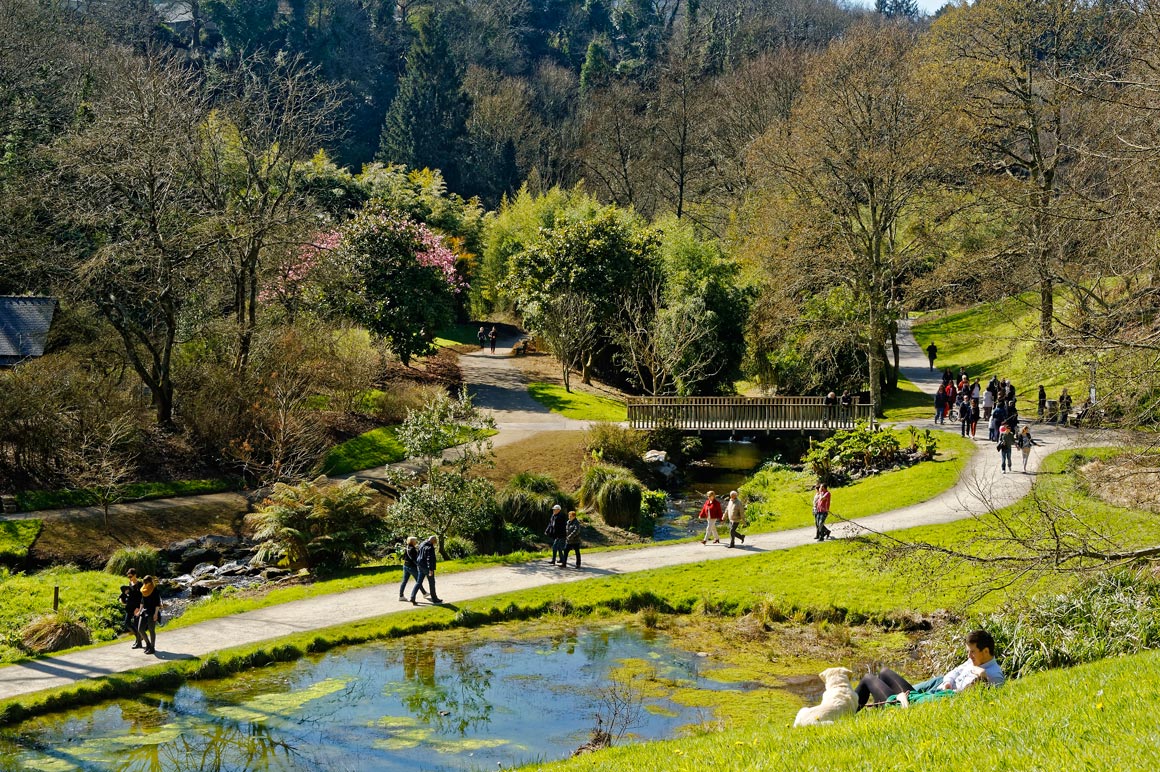
Pratical information :
- Garden is open from 9 a.m. to 6 p.m., from 9 a.m. to 7 p.m. or from 9 a.m. to 8 p.m, depending on the season
- Greenhouses are open from 20 April to 5 May, from 1st July to 31 August and from 19 October from 3 November
Self-guided tour of the tropical greehouses is available every day from 2 p.m. to 5.30 p.m.
Prices :
Greenhouses
- Self-guided tour : €6 or €4 for people aged 8 to 18 years old and concessions (free for children under 8)
- Guided tour (Wednesday and Thursday at 11 a.m.): €8 or €5 for reduced rates (free for children under 8)
Garden
- The garden is free on self-guided tour
- Guided tour (Thursday at 14:30 p.m.) : €8 or €5 for reduced rates
Find all the informations you need on the website of the conservatory.
After a great day's sightseeing, on the way back to the Moulin Blanc Marina, you can stop off for a drink in one of the harbour pubs, and why not stay for dinner...
Calling at Marina du Château? Take a look at the day trip we've prepared for you !
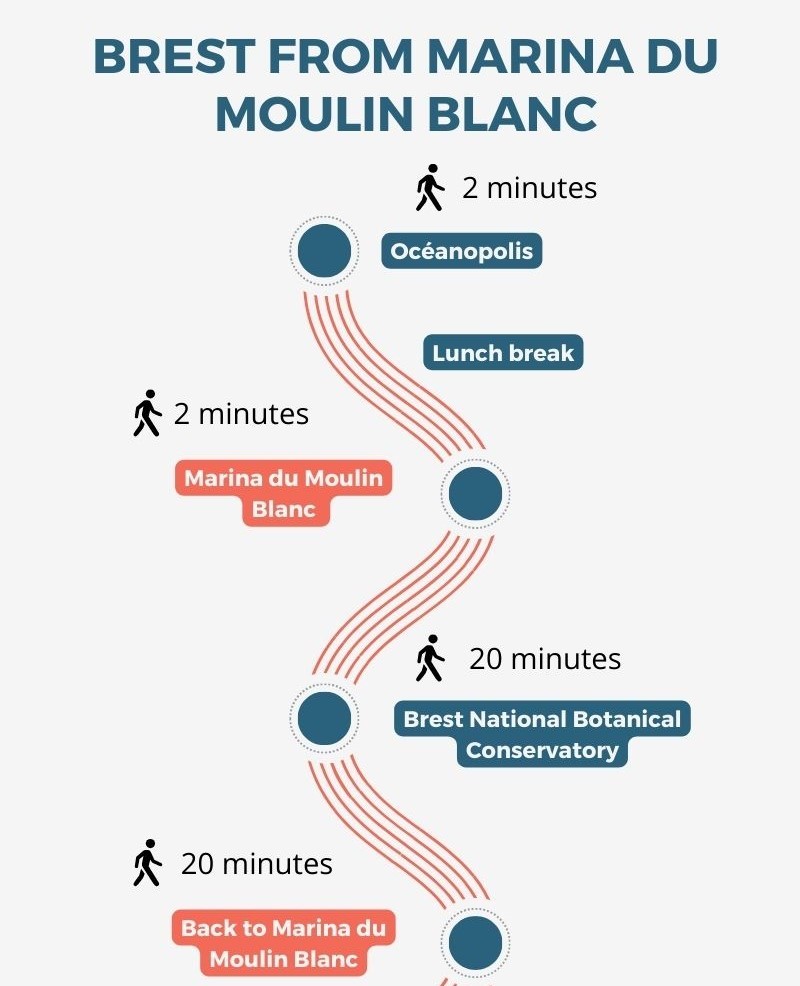
We hope you enjoy your visit !
Discover Brest in one day from Marina du Château
On stopover at Brest marina, and want to discover the city ?
We have prepared a special itinary for you, covering all the emblematic places you absolutly must see when you're in Brest !
National navy museum and castle of Brest
Classified as an historic monument since 1923, the castle of Brest has witnessed the history of the city, century after century. As Brest's oldest Museum, the castle is part of the city's heritage.
Nowadays, it hides the National Navy Museum, retracing the history of the Brest arsenal and the French Navy.
The Museum has 15 permanent and temporary exhibition rooms, who houses art objects, navigation instruments, paintings, model ships and furniture.
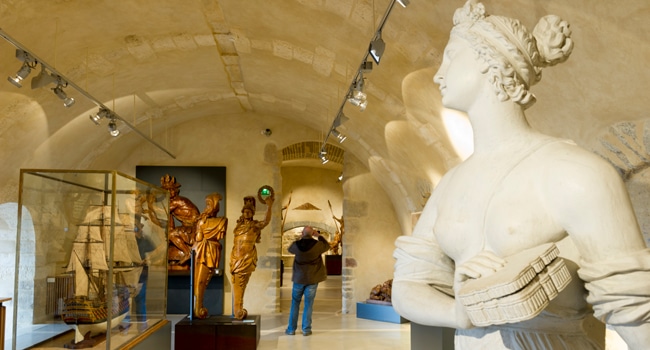
Pratical information :
Opening hours :
- open all week from 10 a.m. to 6.30 p.m. from April to September
- From 1.30 p.m. to 6.30 p.m. from October to March, except on Tuesdays
- Closed on 1 January, 1 May and 25 December
Please note that the last entrance to the castle is 1 hour before closing time.
Accessibility :
The site isn't accessible to people with reduced mobility, as it has many steps. It's also not suitable for pushchair, so baby carriers are available at reception desk.
Prices :
- €9 online and €10 at the ticket office
- To access the audioguide, a supplement of €2 will be charged
- Reduced rates are €7 online and €8 at the ticket office (audioguide not included)
- Free admission to the castle applies to under 18 years old, 18-25 year-olds from the European Union, education pass holders, active military and civilian employees from the French Ministry of the Armed Forces, people on minimum social benefits and job-seekers, disabled persons and an accompanying adult.
Find all the informations you need for your visit on the website of the national navy museum
Tanguy tower
If you want to get an idea of what the city of Brest looked like before the war and enjoy the superb views over the city, don't miss the must-see Tower Tanguy !
Built in the 14th century, the tower watches over the Penfeld. You will be able to admire Jim Sévellec dioramas retracing the great moments in Brest's history before 1939.
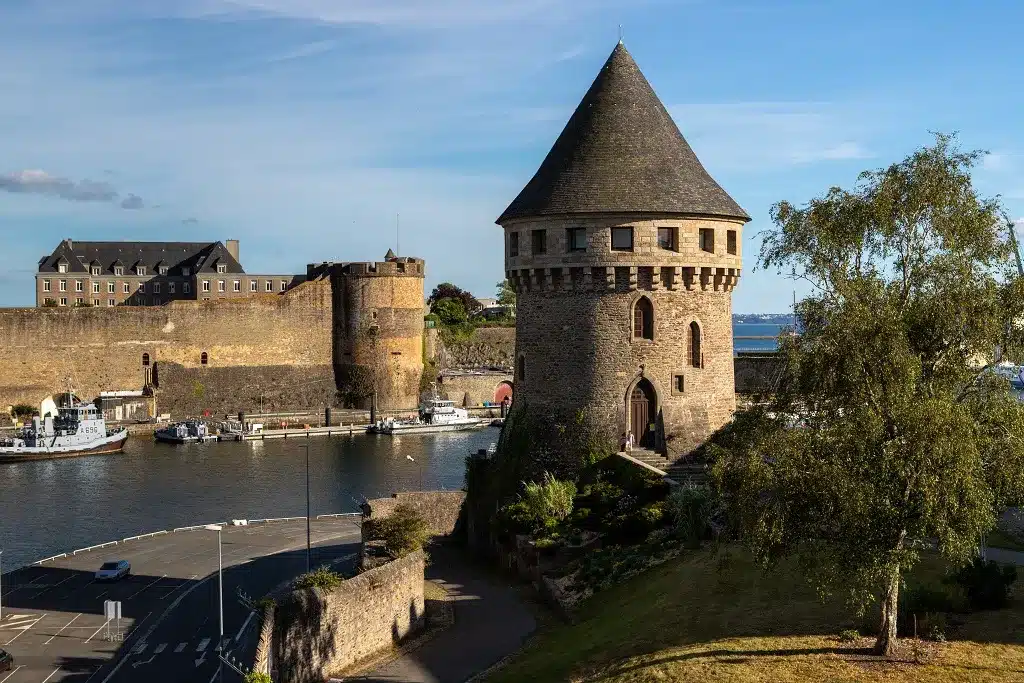
Pratical information :
Opening hours :
- Open from 12 noon to 6:30 p.m. every day from April to the end of September
- From 2 p.m. to 6 p.m. fromTuesday to Sunday from October to March
Prices :
- Self-guided tour is free
- €6 per adult and €4 for children aged 6 to 17 for a guided tour
Find all informations you need for your visit on the website of Brest métropole
Sadi Carnot shelter
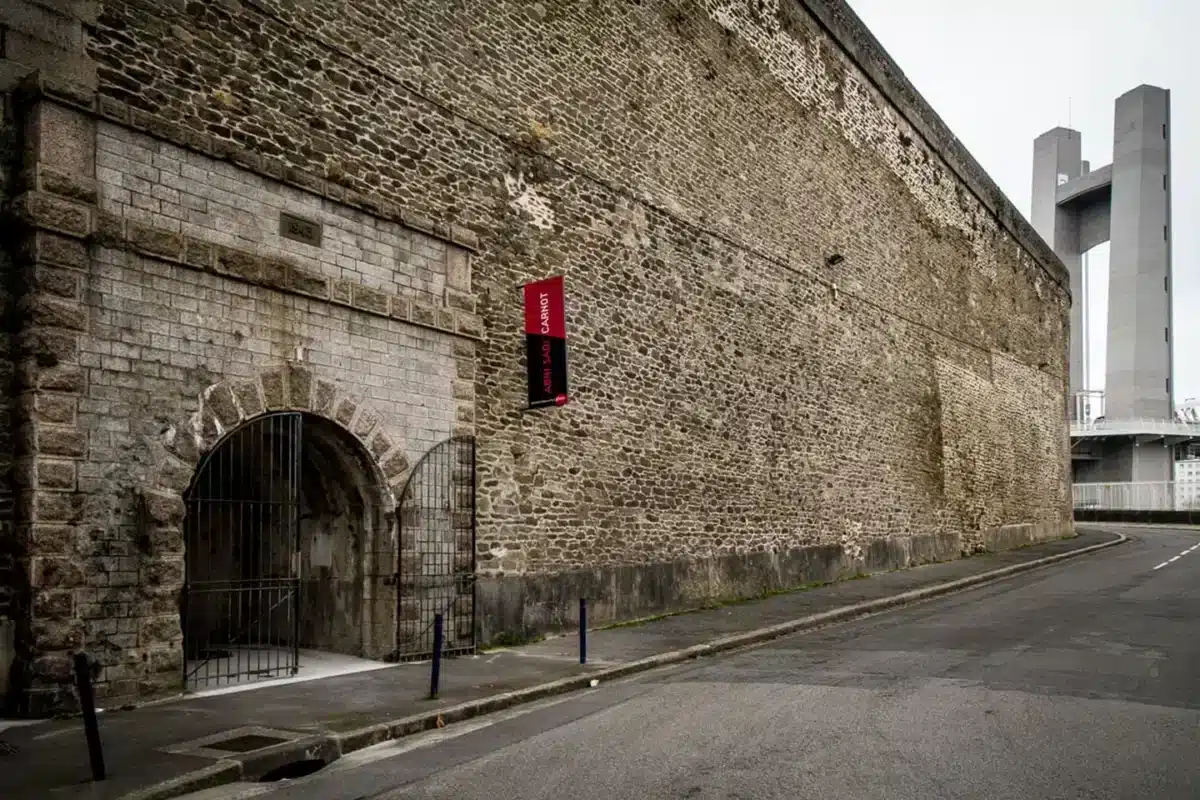
The Sadi Carnot shelter was the main underground shelter in Brest during the Second World War.
It is now a place of memory, because around a hundred Brest residents lost their lives there on 9 September 1944 in a terrible explosion.
Today, this shelter provides an insight into the lives of the citizens of Brest during the Second World War.
Pratical information :
Opening hours :
- Open from 1st September to 3rd November and from 1st April to 30th June at 2 p.m, 3 p.m, 4 p.m. and 5 p.m. on Saturdays and Sundays
- From 6th July to 1st September at 2 p.m, 3p.m, 4 p.m and 5 p.m every day except Wednesday
Accessibility :
- Accessible to people with reduced mobility
Prices :
- Free for self-guided tour
- €6 per adult (free for children under 6) for a guided tour
Bookings can be made with Brest Toursit Office by calling +0033 (0)2.98.44.24.96 or on the tourist office website
Lunch break in the rue de Siam
After a mornig visit, a lunch break is a must !
You will be able to grab a bite to eat as you please from the many restaurants on the city's main thoroughtfare : rue de Siam.
For French cooking, opt for Simone et Yvette, Le Repaire, La tentation des mets, Le Coup de fourchette or Les Ptites recettes.
For a taste escape, let yourself be tempted by :
- Orijinal and his Turkish food
- Côté sushi for Japanese and Peruvian dishes
- Piperno and its Italian cooking
- Brest Saigon and Le Tonkinois with their Vietnamese specialities
But if you want to have lunch in an unusual place, choose the PAM !
This former printing works has been into a third place, with spaces for coworking and meetings, as well as a bookshop, shops, workshops and... Restaurants !
You will find a grocery shop, an organic bakery and three restaurants serving fresh and local produce.
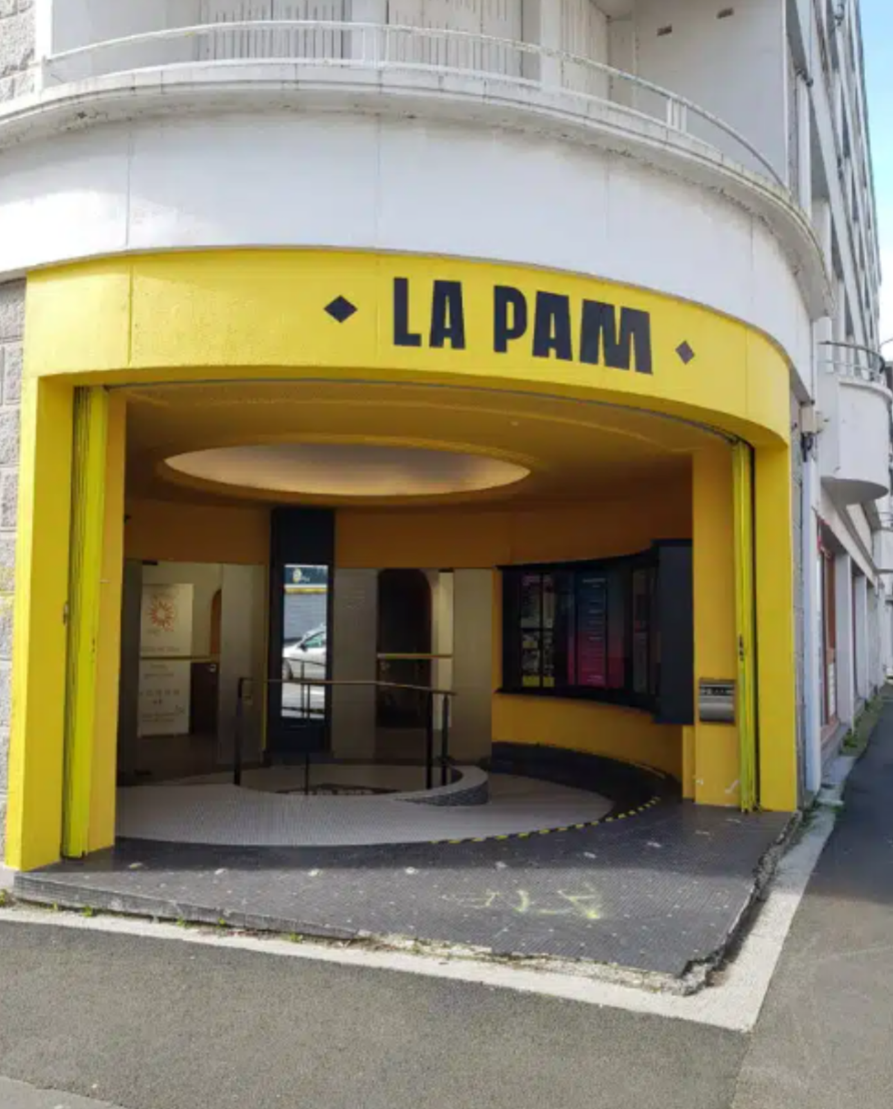
Atelier des Capucins
Visit Europe's largest public square in an unusual setting ! One of the places not be missed in Brest !
Originally a convent and then a barracks for the French Navy, the Ateliers des Capucins housed machining, boiler making, foundry, assembly, fitting and electrical workshops for the manufacture, and repair of ships for the French navy. The Ateliers des Capucins have now been refurbished for public use.
It's a place steeped in history that has retained its industrial style, where you can learn, have fun, eat or shop...
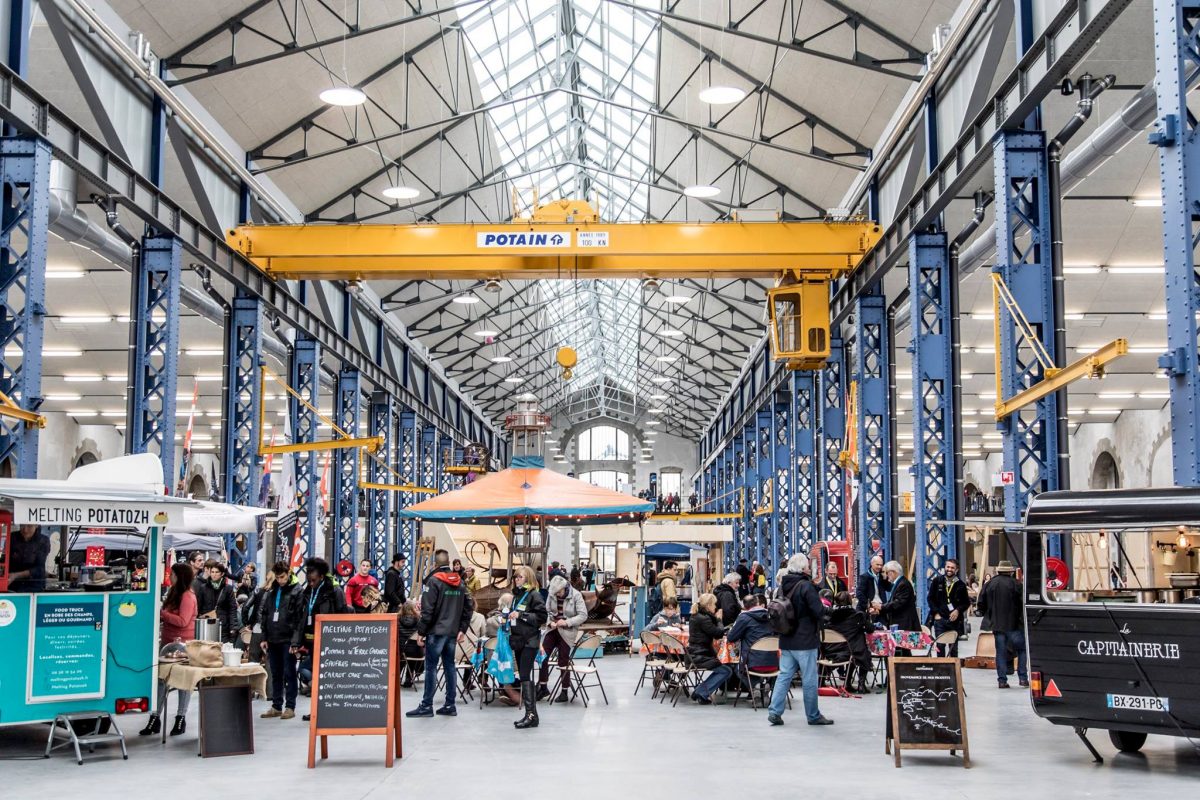
The worshops is home to :
- 70.8, the gallery of the oceans
- The famous Emperor's canoe
- A cinema
- A media library
- A climbing gym
- Shops and restaurants
You can also skate, rollerblade or stroll around the place des Marchines, a reminder of the industrial activity of Brest's arsenal.
Partical information :
Opening hours :
- Open 7 days a week from 10 a.m. to 00 a.m. from Sunday to Thursday
- From 10 a.m. to 01 a.m. on Friday, Saturday and eves of public holidays
Accessibility :
- Pets not allowed.
Prices :
- Free
- Other prices according to activities
The Cours Dajot
On the way back to the harbour you can pass by the Cours Dajot.
It combines greeny and history with one of the Brest's finest panoramic views. In fact, when the weather's right, the view over Brest harbour, Crozon and the Plougastel peninsula is breathtaking. You'll also find the Pink tower, built in 1927 by the Americans "in memory of the great deeds of the American naval forces" and destroyed during the Second World War. It was rebuilt identically in 1958.
The Cours, with its plane trees and green spaces, is the perfect place to relax and take a lunch break.
Finally, on our way down to the port, we can discover a grand staircase built in 1859 at the behest of Napoléon III to facilitate access to the city from the commercial port.
The staircase was immortalised in the film Remorques by Jean Gerémillon, in which Jean Gabin, playing a tugboat captain, go down the famous Cours Dajot staircase.
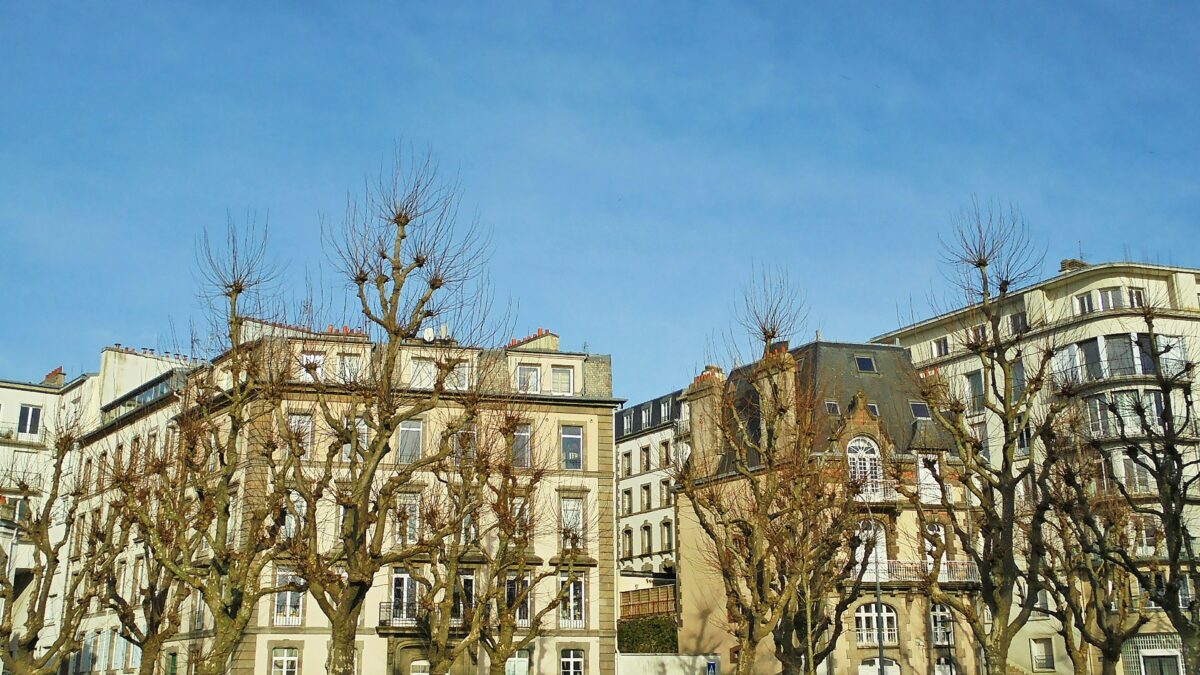
Pratical information :
Accessibility :
- Pet-friendly
Prices :
- Free
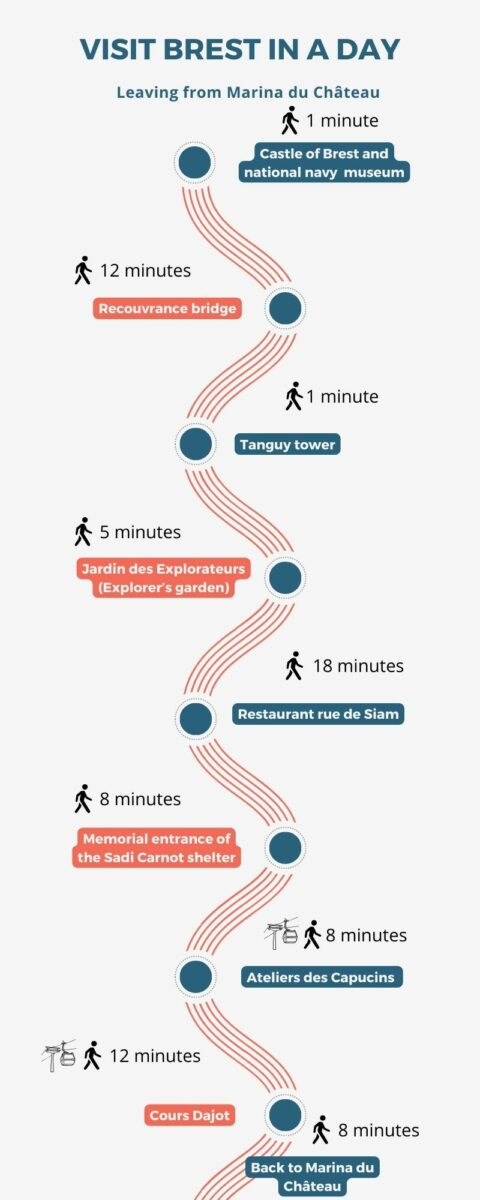
We hope you enjoy your visit !
8 MUST-SEE PLACES IN BREST
If you're lucky enough to be calling at at the tip of Brittany, be sure to visit the city of Brest, which will surprise you with art, culture and history to suit all tastes and ages. From the most famous to the most discreet, discover our selection of the must-see places in Brest.
Places to see in Brest city centre
Brest city centre can be reached on foot from the Marina du Château, or by bus from the Moulin Blanc harbour.
This makes it easy for yachtsmen calling at Brest to discover the heart of the city.
Brest Castle and the Marine Museum
Located just a few minutes' walk from the marina du Château, Brest Castle has survived 17 centuries and is a privileged witness to the city's history. It is the oldest monument in Brest.
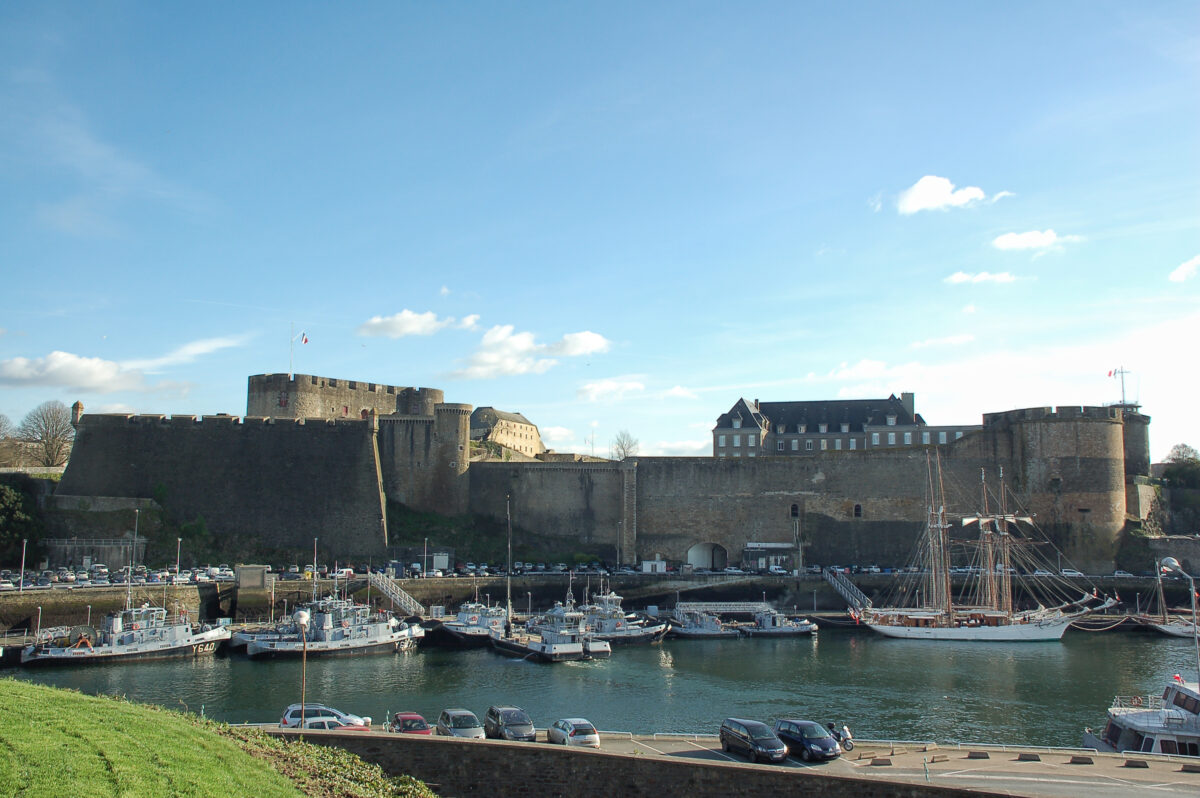
The castle now houses the Marine Museum , which traces the history of the French navy and the Brest arsenal through 15 permanent and temporary exhibition rooms.
Ship models, navigation instruments, furniture and work of arts: the exhibits bear witness to the great maritime adventures.
Don't miss the room dedicated to the La Pérouse expedition, or the impressive room devoted to figureheads.
You can find all the information you need to make your visit a success on the Marine Museum website.
La Pam: an atypical place in a former printing company
La Pam is a third-party space located at 56 rue d'Aiguillon, near rue de Siam. It's a coworking space, a meeting place and a conference venue. But it's much more than that: it's a solidarity bookshop, a designer shop, an artists' studio, and more.
And there's good news for food lovers, too, because the print shop includes:
- a small grocery shop
- an organic bakery
- three restaurants serving fresh local produce

But La Pam also remains true to its origins. Until 2018, it was a printing company, very well known to the people of Brest, which existed for just over 100 years. You'll find a space dedicated to the heritage of printing, with a fine collection of lithographic pieces.
For more information, visit La Pam website.
Rue de Siam
Rue de Siam is the heart of Brest city centre. It stretches from Place de la Liberté to Pont de Recouvrance. Here you'll find shops, restaurants and bars. The latter are mainly located at the bottom of the rue de Siam.
A stroll through the city centre will also give you the chance to discover Marta Pan's black granite fountains, the gateway to the Guépin barracks and the empathic tree in front of the Recouvrance bridge. From here, you can take the cable car to the Ateliers des Capucins, or take the bridge to visit the Tanguy Tower.

Must-see places in Brest, right bank
If you go across to the other side of the Penfeld, you'll discover some places in Brest that are well worth a visit. The little extra? They're free to visit and great fun for the whole family.
Les ateliers des Capucins
Don't miss Europe's largest covered public square in an unusual location.
The Capucins workshops were originally a convent. It was first converted into a hospital in the mid-18th century following an epidemic. In 1791, ownership of the building was transferred to the Navy, which converted it into barracks 10 years later. The convent was then demolished to make way for large workshops for the Navy. They remained in use until very recently.
In 2009, the Navy handed over the workshops to the city of Brest, which decided to turn them into a public space, playing a key role in the cultural and sporting life of Brest.
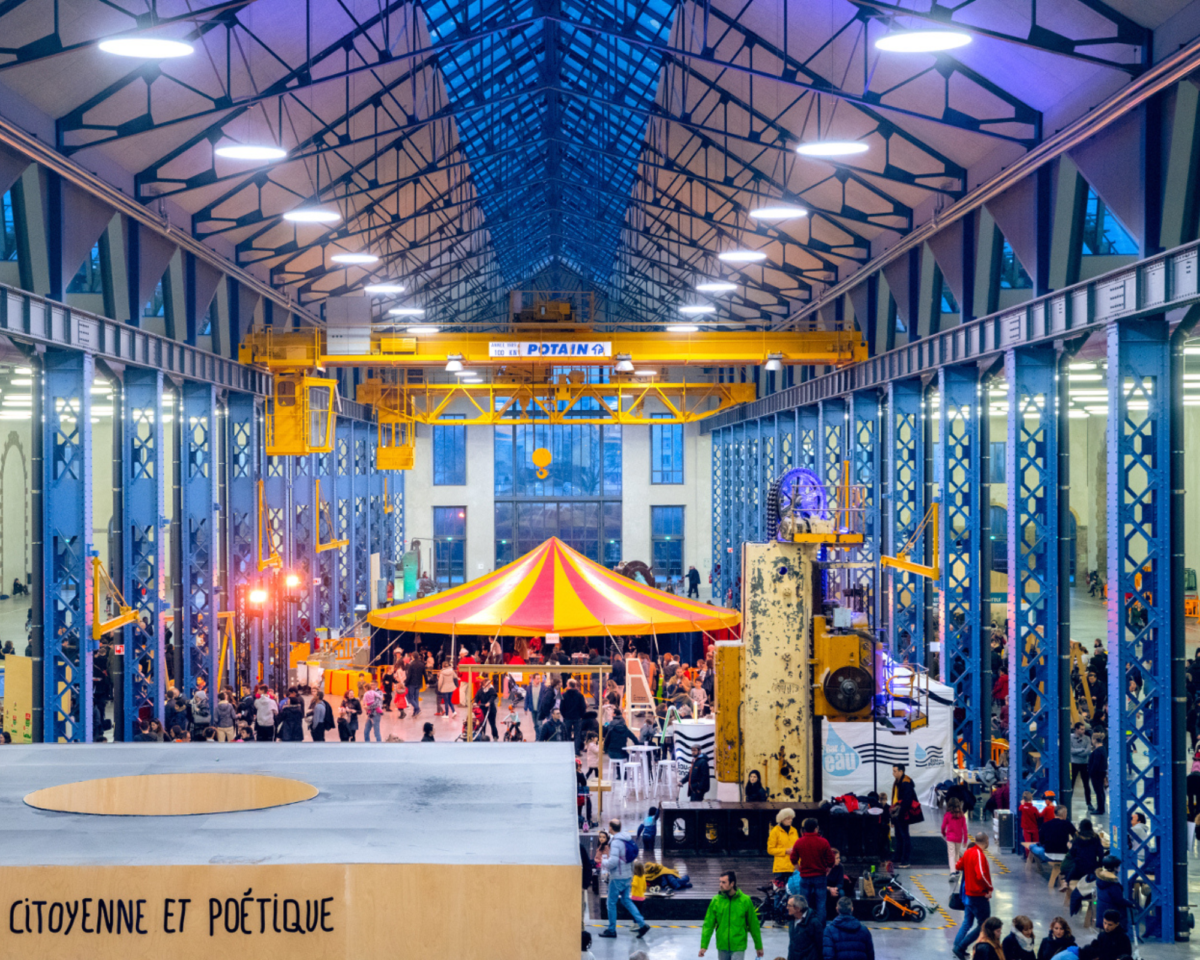
The Capucins workshops are home to :
- 70.8, a museum for the ocean
- The Emperor's canoe
- A media library
- A cinema
- A climbing gym
- Shops and restaurants
- The Place des Machines, where you can rollerblade, skate or simply walk from machine to machine, witness to the activity of the Brest arsenal.
Rue de Saint-Malo
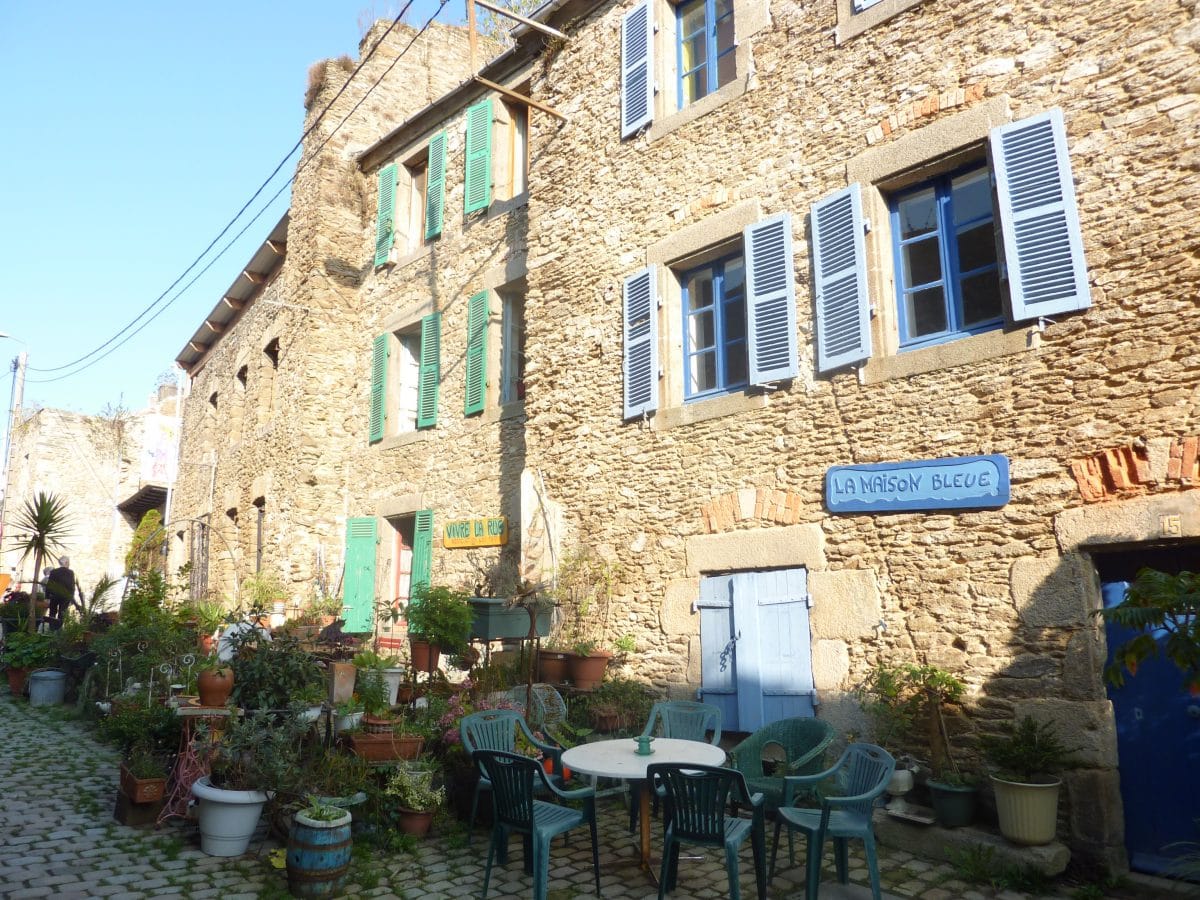
Located below the Plateau des Capucins in the Recouvrance district, Rue de Saint-Malo is one of the few remaining traces of Brest's old town.
The cobbled street runs alongside traditional 17th-century Breton houses and a 19th-century wash-house. The Cour de la Madeleine, meanwhile, was home to the Refuge Royal, where the woman known as La Belle Tamisier passed through its walls.
Today, the Vivre La Rue association offers cultural and musical events not to be missed.
Tanguy Tower
Next to the Recouvrance bridge, on the right bank opposite Brest castle, stands the proud Tanguy tower. Built in the 14th century, over the course of its history it has been occupied by the English, destroyed, rebuilt and renovated.
It is now home to a museum of the old town, with magnificent dioramas by Jim-E. Sévellec and a beautiful scenography for an immersive visit.
A special bonus: the 360° view of Brest from the top floor of the tower.
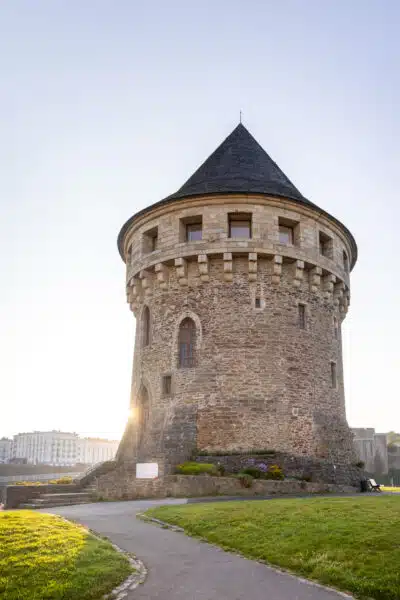
Must-see places in Brest: Marina du Moulin Blanc side
If you are calling at the Marina du Moulin Blanc, you'll have the chance to choose between two completely different locations.
Stang-Alar Valley
Near the Marina du Moulin Blanc is the Stang-Alar valley, a large nature reserve of around 40 hectares where you can enjoy a walk along the river that marks the border between the towns of Brest and Guipavas.
The site is home to the garden of the Brest National Botanical Conservatory, whose main mission is to preserve endangered wild plant species. With an impressive diversity of nearly 2,500 species, get ready for a real tour of the plant world!
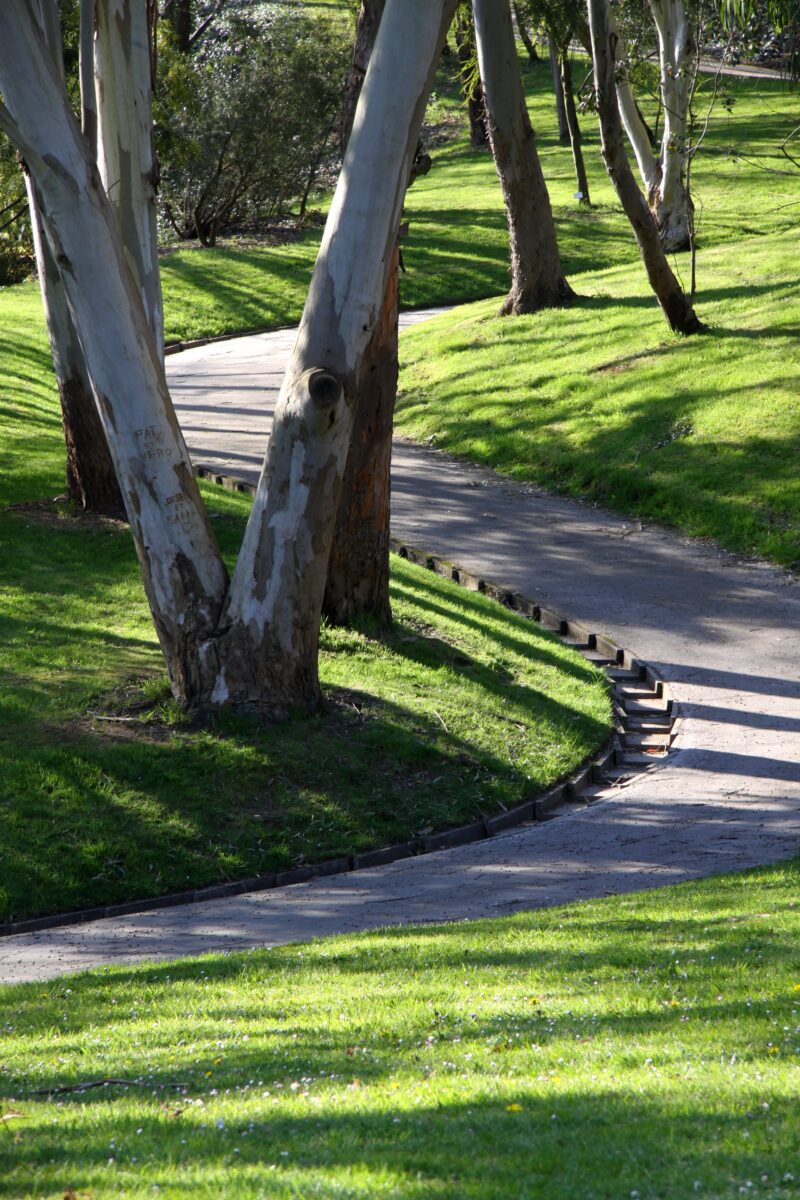
Océanopolis
A must-see in Brest: Océanopolis. Just a few minutes' walk from the visitors' pontoon, this major scientific culture centre dedicated to the ocean welcomes you all year round to the delight of young and old alike.

You'll discover three sections (Brittany, Tropical and Polar) with around fifty aquariums, including the shark tank, the seal tank and the minilab.
Allow at least three hours for your visit, and to avoid queuing at the entrance to the park, you can buy your tickets online.
Your visit to Brest's must-see locations is sure to be an exciting one, with activities to suit all ages. See you soon in Brest!
Customs formalities for yachts calling at Brest
If you're calling at Brest, it's essential to understand the customs formalities that apply to you. Customs regulations apply to all yachtsmen and yachtswomen, whether they are sailing small sailing boats or larger yachts. These formalities are designed to ensure compliance with the laws and regulations in force when entering and leaving French territory.
Customs formalities for yachts calling at Brest: who is affected?
Border checks are compulsory if:
- You are entering France by sea from a country that is not part of the Schengen area.
- You are leaving France by sea for a country outside the Schengen area.
These customs formalities apply whether you are sailing on your own boat or on a charter boat.
All persons on board are subject to border checks, regardless of their nationality.
What documents do I need to clear customs?
Before calling at Brest, you must send the entry or exit form by e-mail to the customs office, with a copy to the Brest marina concerned by your call.
This form contains all the important information concerning your arrival in Brest, the boat and the people on board. It must be sent to customs at least 24 hours before your arrival.
You will then be contacted by customs officers who will arrange to meet you at the Brest customs office.
At this appointment, each passenger must have a valid passport. Make sure you also bring the boat's papers.
Where is the customs office in Brest?
The Brest customs office is located at 14 quai de la douane, just a few minutes' walk from Marina du Château.
What other maritime border crossings are there in Brittany?

Brittany has 6 maritime border crossings:
- Saint-Malo
- Saint-Brieuc
- Roscoff
- Brest
- Lorient
- Saint-Nazaire
Do you have a question about customs formalities? Visit the customs website. You can also contact us at any time!
Calling at Brest
Whether you're an experienced sailor or a budding yachtsman, Brest's marinas welcome you all year round. Discover Brest, its bay and two marinas!
Marina du Château, Marina du Moulin Blanc : which marina to choose ?
Brest's marinas have different characteristics. Depending on your needs, one of them will be best suited to your stay. We explain everything to help you make your choice.
A stopover at Marina du Château
Marina du Château is the first marina that you can go to when arriving at Brest. The marina is ideally located close to the city-center.
It is well protected by the military harbor, making it an ideal stopover whatever the weather.
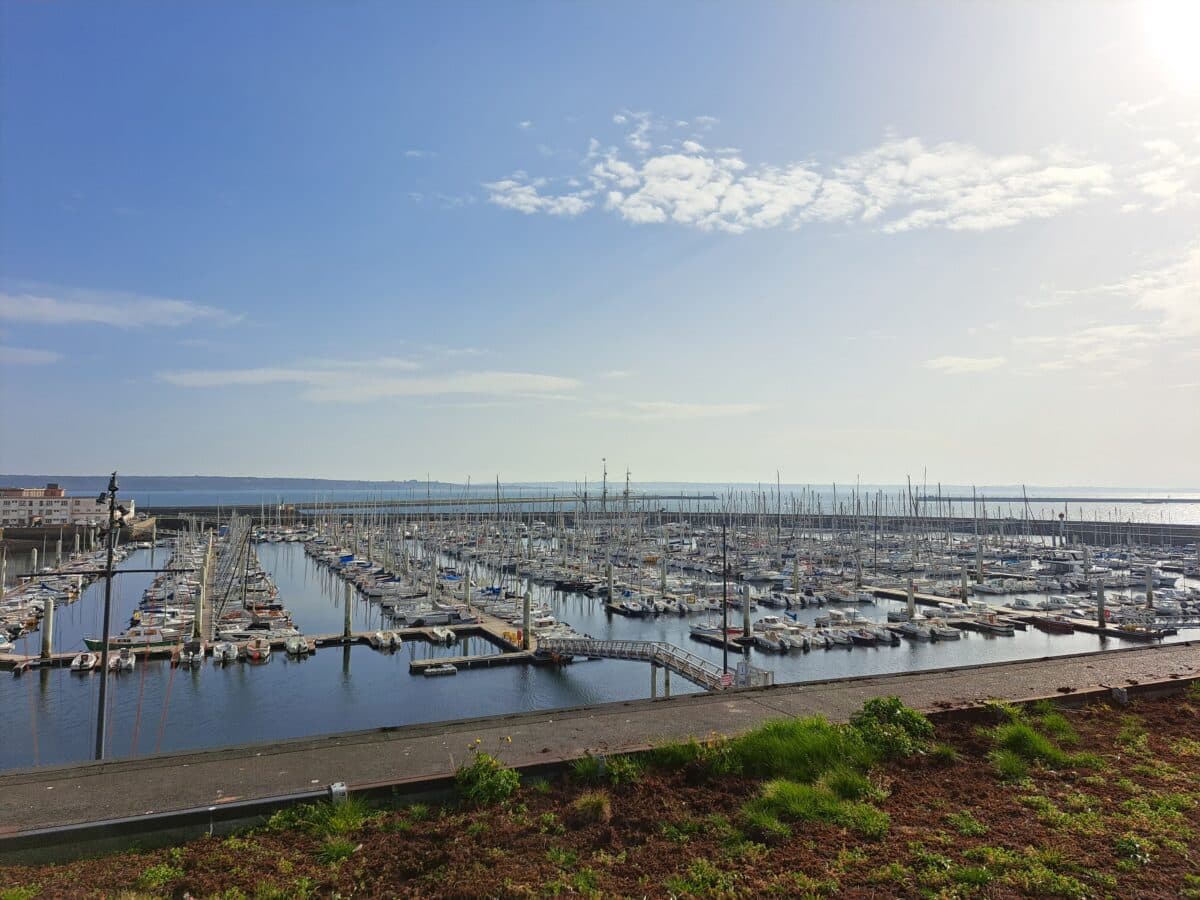
Near Marina du Château :
- Restaurants and bars to discover the local gastronomy and atmosphere.
- Customs office: just a few minutes' walk from Marina du Château.
- The train station: just a 15-minute walk from the port!
- The Musée de la Marine: located just above the marina, a 5-minute walk away. The perfect opportunity to discover Brest's maritime history.
- Rue de Siam and the city-center: a 15-minute walk will take you to the city center.
- Cable car: beyond rue de Siam, you can easily take the cable car to the ateliers des Capucins.
- Public transport: you'll find bus stops at the commercial harbour and in the city-center, where you can also take the tram to get around Brest quickly.
A stopover at Marina du Moulin Blanc
The Marina du Moulin Blanc is located at the mouth of the River Élorn.
Situated next to Océanopolis and the Stang-Alar valley, the marina is perfect for a quiet stopover.
The port has a handling service and a careening area, which can be useful if you have technical needs.
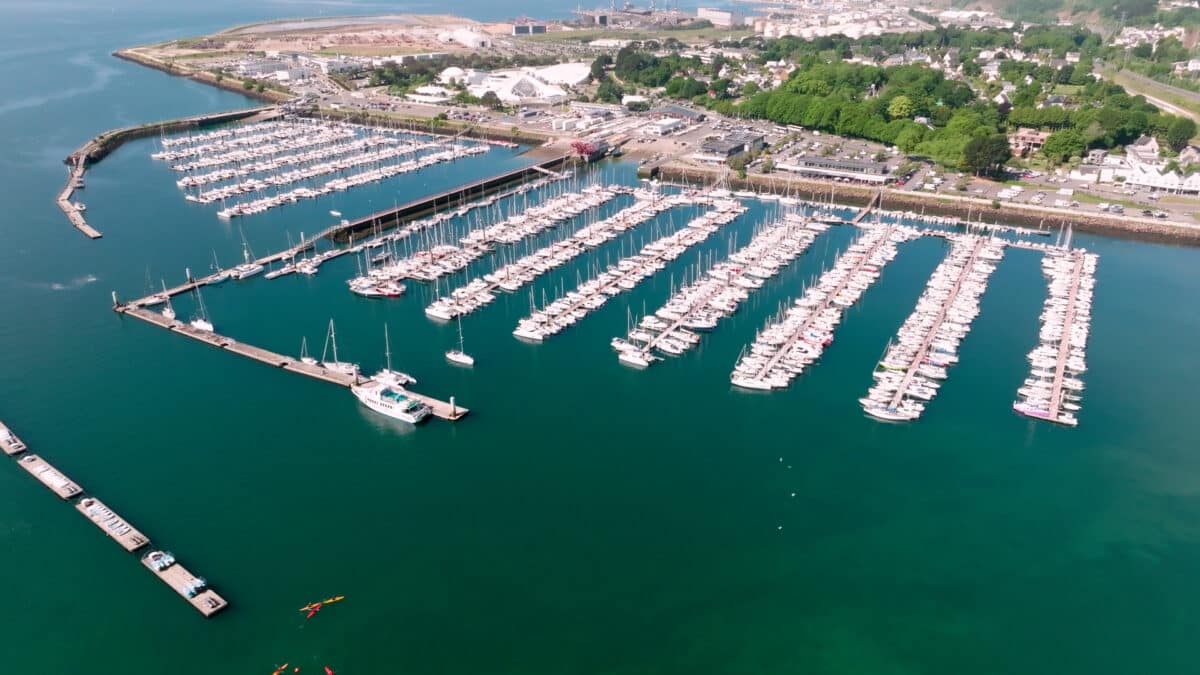
Near Marina du Moulin Blanc:
- Restaurants and bars where you can enjoy the local cuisine and typical Brest atmosphere.
- Sailmakers, shipyards, dealers: many yachting professionals are located not far from the marina, and will be able to meet your needs.
- Océanopolis: the scientific culture centre dedicated to the ocean, a must-see in Brest.
- The Stang-Alar valley: enjoy a peaceful stroll in the valley. You can also visit the botanical garden of Brest.
Calling at Brest: procedure for entering the marina
To ensure that your arrival goes as smoothly as possible, here is the procedure to follow when you arrive near the marina you wish to call at:
- Call by radio on channel 9: give the name of your boat, its dimensions and the duration of your stay.
The marina teams will show you a suitable berth either in the annual contract pontoon, or on the visitor pontoon.
During the season, we do our best to meet you on the water and accompany you to your berth. However, if it is very busy, you may have to wait for a while, or you may be asked to go to your berth on your own.
Out of season, or outside harbour office opening hours, you can moor directly at the visitor pontoon.
- Register with the harbour office: whether you have called at Brest before or are coming for the first time, you need to register with the harbour office.
Make sure you have the boat's papers so that you can fill in your port of call form correctly.
It's also when you check in that you'll get the access codes for the pontoons and toilets, the wifi code, and all the information you need for your stay in Brest.
- Declare yourself at the customs office: if you are coming from outside the Schengen area, you must declare yourself at the customs office located 3 minutes' walk from the Marina du Château at 14 quai de la douane.
Special case: the quai du Commandant Malbert at the Marina du Château.
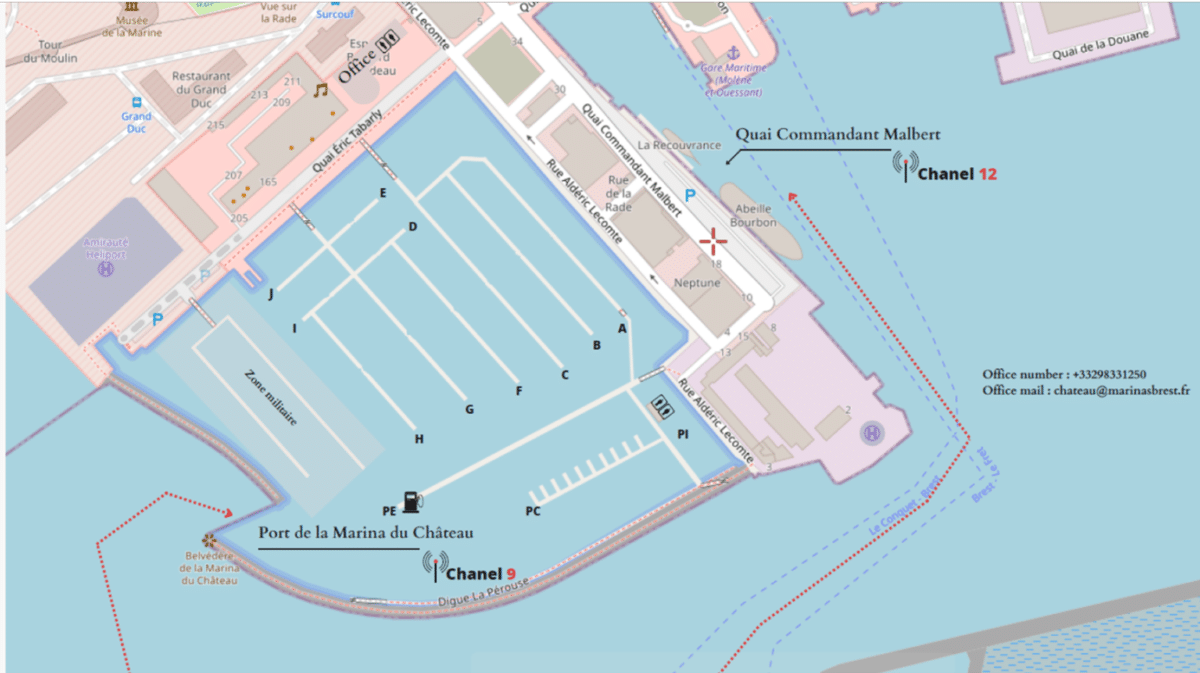
Reserved for larger vessels, the Quai Malbert pontoon is located within the commercial harbour. If you are allocated this berth by the harbour agents, you should call the Marina on channel 9 when you arrive, and then channel 12 to inform the commercial port of your arrival.
What to do in Brest during a stopover
There's plenty to see and do in Brest, even if you're only staying a few days.
Sports activities
Would you like to do some sport during your holidays? Here are a few ideas for activities that will allow you to discover Brest at the same time:
- Nautical activities: kayak, paddle, light sailing, sail in Brest harbour thanks to Brest Bretagne Nautisme.
- Cycling : hire a bike to discover Brest and the surrounding area.
- Swimming pools: there are several swimming pools in Brest where you can go swimming. You'll find the Spadium Parc close to the Moulin Blanc harbour.
- Hiking: take the GR34 and discover the coastal paths from Brest.
Cultural activities
Brest is a dynamic city in terms of culture. There's something for everyone.
You can enjoy a show at Le Quartz, the Maritime Festival of Brest, held every four years, or the museums and historic sites in the city centre.
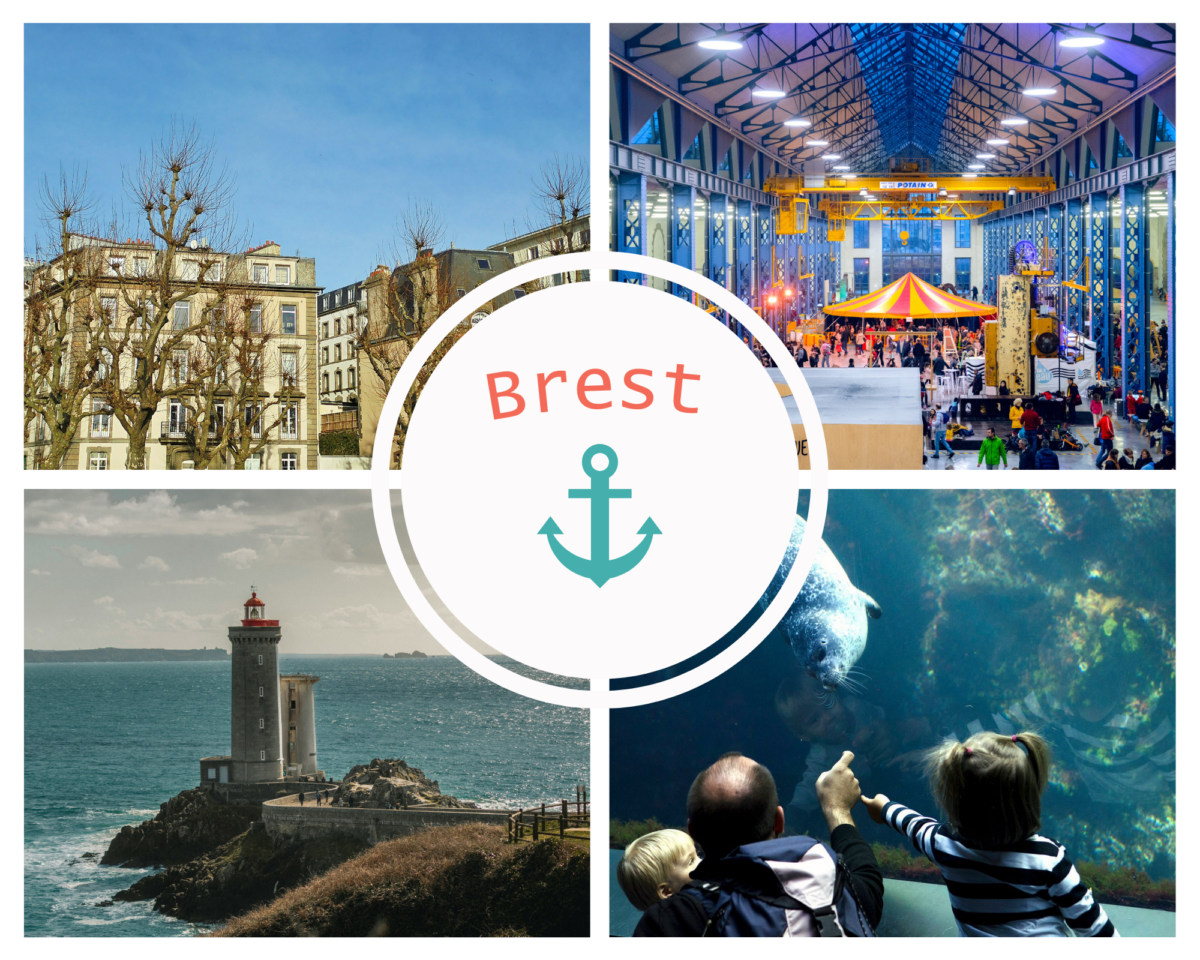
The must-see places in Brest are :
- Océanopolis
- The botanical garden
- The Musée de la Marine
- The Arts Museum
- The Sadi Carnot shelter
- The ateliers des Capucins home in particular to the 70.8 by Océanopolis and the Emprereur rowing boat
- The Rue de Saint-Malo
- Tanguy tower
- The maison de la Fontaine (Fountain House)
- The jardin des Explorateurs (Explorers Garden)
See you soon on the pontoons!
New: special absorbent sheets for yachting
The Brest marinas are committed to providing solutions to help protect the environment and prevent pollution. As part of this commitment, you can buy absorbent sheets suitable for pleasure boats at each harbour office, which can be placed around fuel tanks to limit fuel leaks. Find out more about the benefits of this reusable product.
Special absorbent sheets for yachting, for pollution-free refuelling
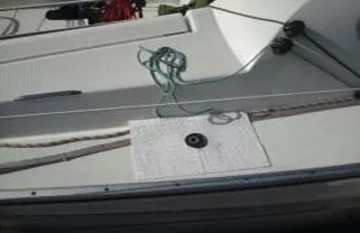
Absorbent sheets are ideal for pleasure boats.
They have a hole in the centre and should be placed around the fuel tank when refuelling.
They quickly absorb any small leaks, which not only protects the environment but also keeps the boat clean.
These absorbent sheets are reusable and can be stored in airtight containers between uses.
Price: €1 per sheet.
Pollution in marinas
The most common types of pollution found in marinas come directly from the activities of pleasure boaters. The main pollutants are black and grey water, and fuel. The Brest marinas therefore want to put in place solutions to help harbour users protect their environment.
Fuel stations in marinas are always sources of pollution, to varying degrees. Fuel leaks are frequent. Diesel spreads very quickly on the surface of the water and evaporates within 24 to 48 hours. Petrol, on the other hand, evaporates more quickly, but is more dangerous because of the high risk of explosion. Fuel spilt in the sea is also highly toxic for biodiversity.
There is no such thing as a zero risk of spillage, but Brest's marinas want to keep pollution within their harbours to a minimum. That's why they are putting absorbent sheets on sale this year.
The Brest marinas, which are certified as Clean and Active in Biodiversity Harbours, are carrying out a number of initiatives to protect the environment, including the installation of MéGO! ashtrays, collaboration with the Roscoff biological station and Le Cèdre, and training teams in ways of combating oil pollution. Absorbent sheets are the new thing to discover!
It's easy to get hold of the sorbent sheets: they're on sale at every port.
Need more information? Just get in touch!
Arkea Ultim Challenge : Ocean Racing and Ecology
The Arkea Ultim Challenge, which set off from Brest on the 7 January, drew crowds to the village set up for the occasion and at the start. With its clean village and a stand to raise awareness of marine pollution, the race is committed to the environment and ecology. But that's not all! The six competing skippers will have to avoid certain areas that are off-limits to sailing: cetacean protection zones. Come aboard with us to find out why this new measure is particularly important for the ecology and the world of ocean racing.
Cetacean protection zones
The keenest observers following the Arkea Ultim Challenge will have noticed on the race map that certain zones are off-limits to sailing.
These zones are designed to protect cetaceans, and the six skippers taking part in the race are forbidden to cross them - a first in the history of ocean racing!
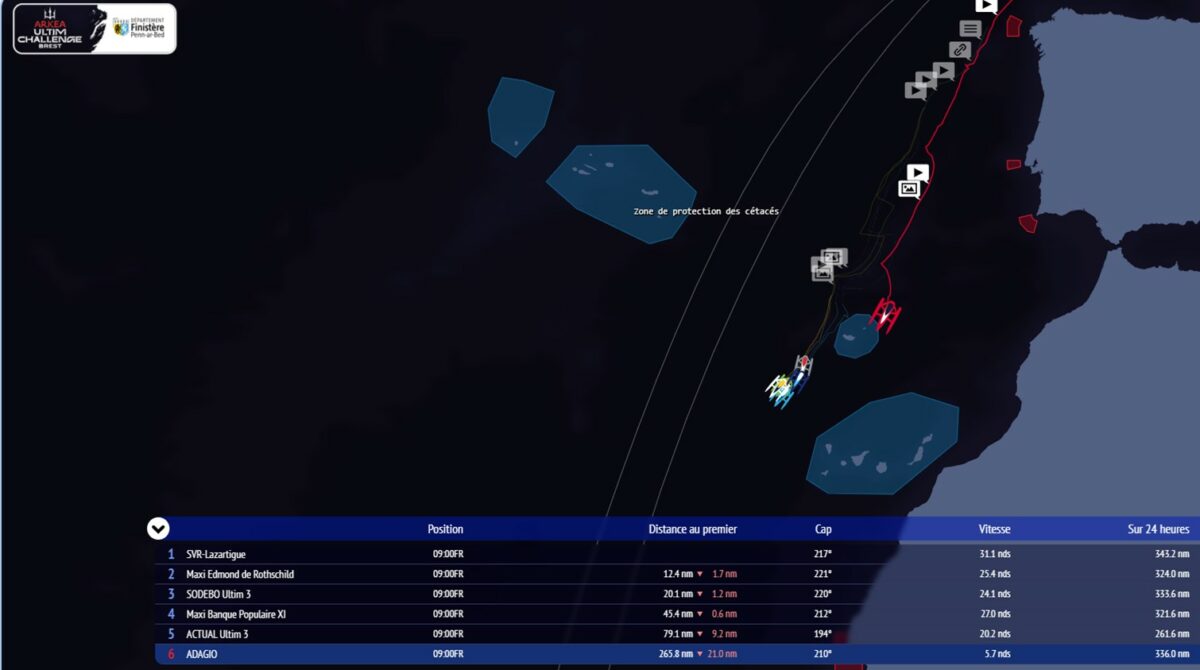
There are 6 off-limits areas on the route of this round-the-world voyage, and they have been defined by the Share the Ocean scientific consortium. They are breeding and feeding grounds for cetaceans, as well as busy passages on the migratory routes. They are located in the Azores, the Canaries, off Cape Verde, the Cape of Good Hope, east of Kerguelen Island and Cape Horn.
The aim of the race directors is twofold:
- Protecting marine megafauna, which is essential to the proper functioning of ecosystems and the maintenance of biodiversity.
- Reduce the risk of collisions between racing boats and cetaceans. In this way, the Arkea Ultim Challenge enhances the safety of skippers at sea, and reduces the risk of injury or death to an animal.
The trimarans are equipped with devices that emit noises at frequencies that keep animals away, but they are not 100% effective and the risk of collision remains high. Defining zones that skippers will not be able to cross is therefore a very good thing.
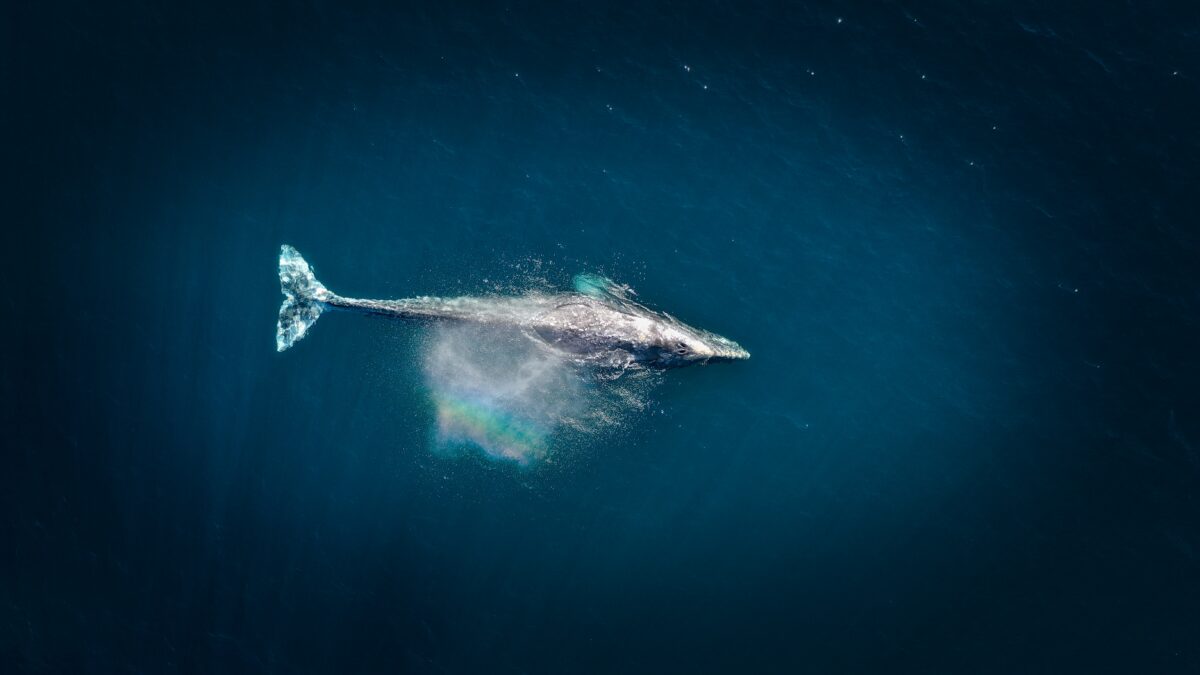
Depending on the region and the season, cetacean protection zones are home to blue whales, killer whales, dolphins, sperm whales, pilot whales and southern right whales, which can be up to 18 metres long.
Ocean racing and ecology: tomorrow's challenge?
Sailing is a sport with a very clean, green image. There's nothing sweeter than moving with the wind.
But the reality is quite different. The carbon impact of boat building and the logistics of ocean racing events is significant.
But awareness is growing in front of the collapse of biodiversity and climate change. As a result, Stanislas Thuret has decided to retire from ocean racing in 2023: "The climate emergency and the collapse of biodiversity are incompatible with the way we live ocean racing and competition." He adds that he no longer wants "unlimited competition in terms of performance".
This sailor is also one of the people behind the La Vague collective, whose mission is to change sailing practices to limit their ecological impact.
The cetacean protection zones in the Arkea Ultim Challenge illustrate a growing desire to do the right thing and a desire to move the boundaries in the world of ocean racing. What's even more interesting is that this desire comes from within, and from people who know this field very well, like the La Vague collective.
In a world that is always looking to break speed records and outdo itself from a technological point of view, the challenges of tomorrow will certainly be just as ecological, with perhaps a winner whose carbon footprint from the construction of the boat to the race would be taken into account.
Arkea Ultim Challenge : discovering the three mythical capes
In the echo of the Atlantic waves, where the salty air merges with the dream of great horizons, Brest stands as a prelude to oceanic adventures.
A Breton port steeped in the history of the great explorations, the maritime city is the stage for the boldest dreams of intrepid sailors.
It is from these quays that the Arkea Ultim Challenge sets off, a frantic race towards the three emblematic capes: the Cape of Good Hope, Cape Leeuwin and Cape Horn, with a return to Brest around 40 days later. The ideal opportunity to learn a little more about these three legendary capes.
The Cape of Good Hope : the cape of storms
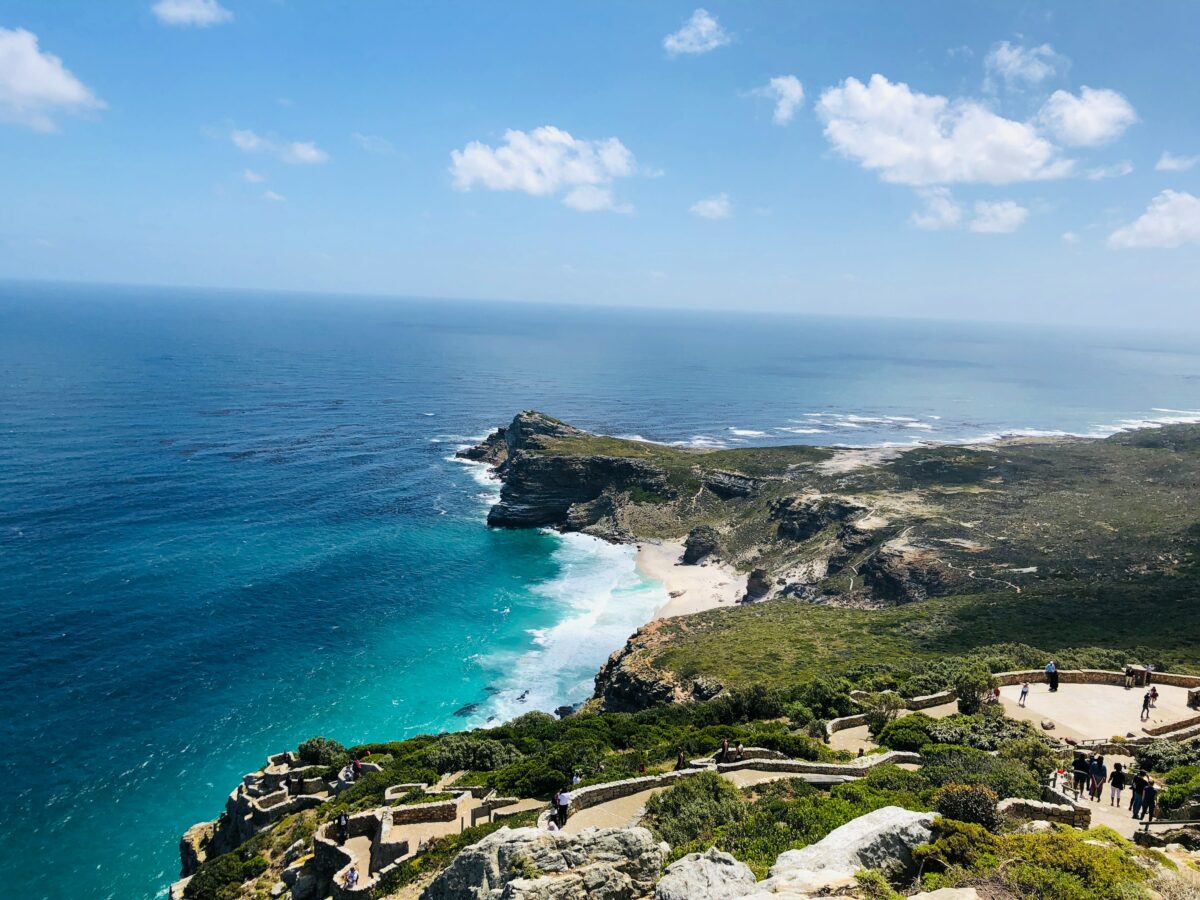
The Cape of Good Hope, crowned with legends and swept by indomitable winds, is the first cape to be crossed by the Arkea Ultim Challenge.
Throughout the ages, the cape has witnessed numerous shipwrecks. The waters surrounding this South African region are said to contain a considerable number of shipwrecks, suggesting a density of around one wreck per kilometre of coastline. For the most part, these remains are the silent witnesses of the great European explorations and expeditions with tragic fates, particularly those bound for India and Asia.
In the 15th century, the Portuguese embarked on a daring exploration, dreaming of a route to India woven between the stormy waves of the cape. Bartolomeu Dias, in his quest for this route to the riches of the Orient, faced down furious winds and christened the place "Cabo das Tormentas" - the Cape of Storms. The king preferred to see it as a happy harbinger of glory and wealth. So he named it the "Cape of Good Hope".
The Cape of Good Hope is also believed to be the site of the shipwreck of the legendary Flying Dutchman.
The Cape Leeuwin : where oceans meet
Cape Leeuwin, the gateway between the Indian and Southern Oceans, is a gentle transition from the tumult of the Cape of Good Hope.
There are no epic maritime tragedies here, but rather a history marked by the discovery of Australian lands. In December 1801, Matthew Flinders named the cape after the Dutch ship "Leeuwin" (meaning "Lioness" in Dutch). This ship, which explored and mapped a portion of Australia's south-west coast in March 1622, was the seventh European vessel to sail to the Australian continent.
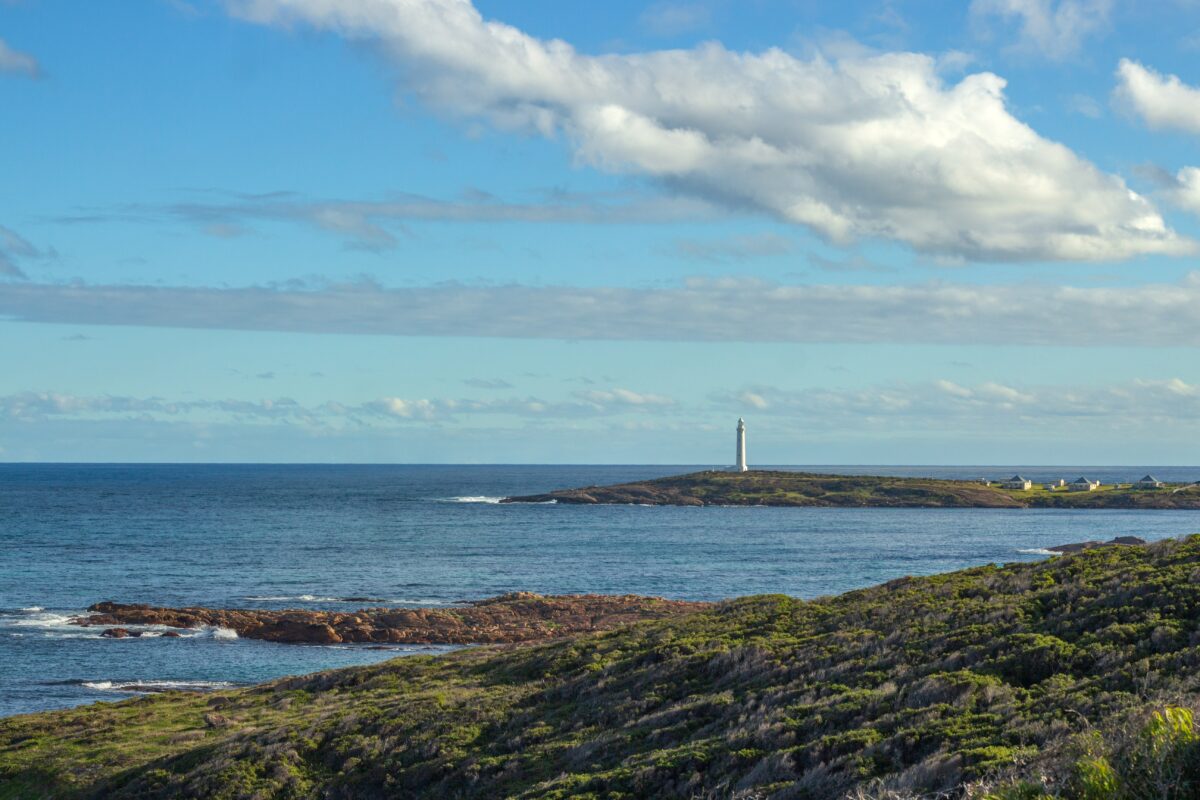
The Wardandi Aborigines were the first inhabitants of the region, and called the place "Doogalup".
The Cape Leeuwin Lighthouse, inaugurated in 1896, is the most south-westerly lighthouse on the Australian continent.
The Cape Horn : where the seas run wild, legends are born
Cape Horn, the legendary promontory between the Pacific and the Atlantic, is a thrill for even the most seasoned sailors. The passage between the South Seas and the Atlantic is marked by frequent gales, creating an impressive dance where the sea roars with force.
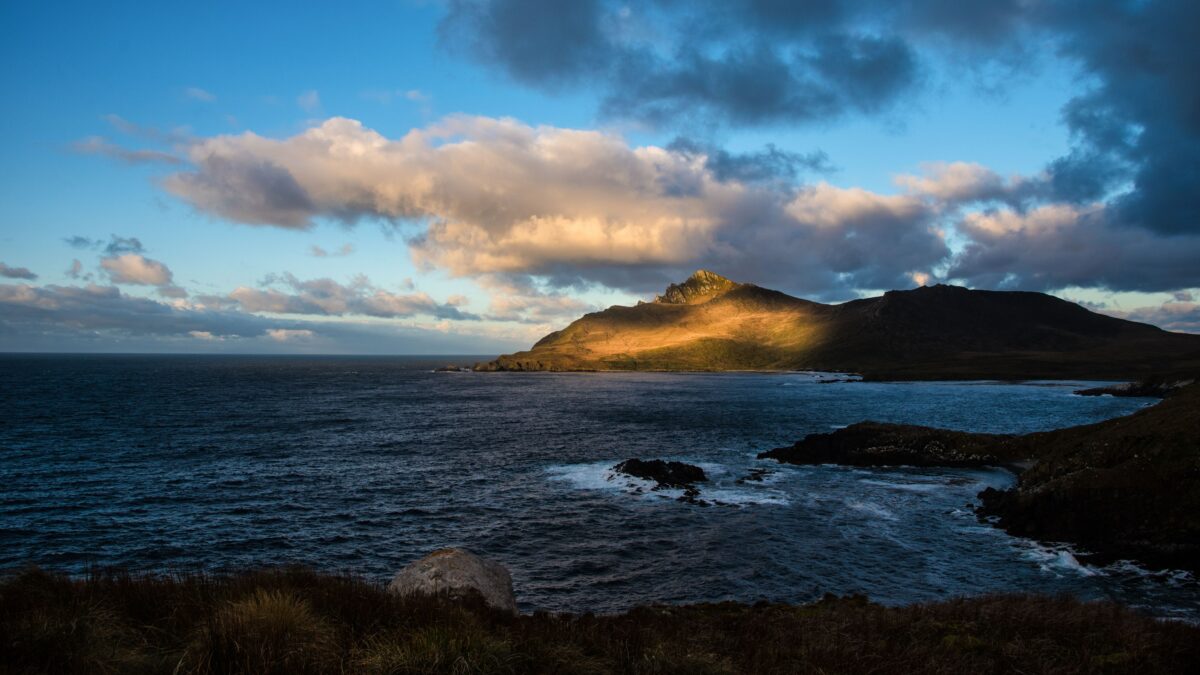
In the early 17th century, the Dutch East India Company held a monopoly on Dutch commercial transport via the Strait of Magellan and the Cape of Good Hope, the only two known routes to the Far East at the time.
Looking for an alternative to break this monopoly, the Dutch merchant Jacob Le Maire, accompanied by the navigator Willem Schouten, set off on an expedition to Tierra del Fuego. Supported by the Dutch town of Hoorn, the expedition left the port with two ships, the Eendracht and the Hoorn, in May 1615. They discovered the cape and named it after their home town.
Although Schouten and Le Maire are officially the first to cross the cape, it is possible that other European sailors, such as Francis Drake, have already done so.
The Arkea Ultim Challenge will undoubtedly be a spectacular ocean race starting from Brest, known as the port of records at the tip of Brittany. Come and discover the giants of the seas moored along the Quai Malbert, take advantage of the village set up for the occasion, and follow the race news on the Arkea Ultim Challenge website.
Securing your boat for winter
The arrival of winter marks the end of the sailing season. It's also a crucial time to prepare your boat for the rigours of the winter season. Storm Ciaran, which blew in at the beginning of November, did not spare Brest's marinas: damaged boats, damaged infrastructure, and so on. To avoid such damage in the future, let's take a look at the essential steps you need to take to secure your boat for winter, and the importance of remaining vigilant throughout the year.
Protecting your boat moored at the pontoon for the winter
Before leaving the pontoons, yachtsmen need to make sure their boat is safe, and this requires a little preparation.
Check the boat's mooring
The condition of your boat's moorings is essential if it is to get through the winter season without a hitch. So make sure the mooring lines are in good condition, with no signs of weakness or deterioration. Adjust them correctly to avoid excessive movement caused by strong winds. A solid mooring ensures your boat's stability all year round.
In winter, double your mooring lines. Strong winds can generate significant forces on the boat, and doubling the mooring lines reduces the risk of the boat coming loose from its mooring or sustaining damage. Moorings can also suffer damage over time due to exposure to the elements, wear and tear or unforeseen factors. Doubling up on mooring lines provides an extra layer of safety in the event of failure of an individual mooring line.
Check the fenders

To protect your boat's hull as effectively as possible, it's important to use sufficient fenders in good condition. Make sure they're properly moored so they don't fall overboard.
Put fenders between your boat and your neighbour's boat. This will protect your boat's hull better in gales and when manoeuvring in the harbour.
Fenders that are too damaged should be replaced.
Clear the sails
The best thing to do is to take the sails off the boat for the winter and store them in a dry place. This prevents them from unfurling and tearing in the wind. The other advantage is that this precaution will help to extend the life of your sails.
If you do leave the mainsail, make sure it's properly furled and protected.
Remove anything that catches the wind
Before winter sets in, or before you leave your boat for a long period, remove all small items of equipment from the cockpit: fishing rods, tenders, or any other accessory likely to cause damage by rubbing or catching the wind.
Don't forget to remove anything that is caught in the wind: biminis, awnings, deck tops, etc. A clear hull reduces the risk of unnecessary damage during the winter.
Securing your boat on land for the winter
Boats wintered on land must also be secured. The sails and anything that catches the wind must be removed.
During the Ciaran storm, several boats on the Moulin Blanc Marina fell over. Some of them were set on personal craddles. To ensure everyone's safety in the future, boats will only be set on the harbour craddles (except those with shaped craddles or Nautipark craddles).

Smaller boats are sometimes stored on their trailers. When this happens, it's essential to put on the brakes and add chocks to prevent the boat from shifting, as happened to two of them during the last storm.
Stay vigilant all year round
Vigilance throughout the year, and particularly during the winter season, is a crucial step in ensuring the safety of your boat and those around it.
Regular visits to your boat
Even during the winter, take the time to visit the boat regularly. Check that the mooring is still secure and that no problems have arisen. This will enable you to detect any signs of damage or anomalies quickly.
Report any anomalies to the harbour office
Sharing responsibility for the safety of all boats in the marina is essential. If you notice anything wrong with your boat or a neighbour's, report it immediately to the harbour office. Prompt action can prevent accidents and protect all harbour users.
Securing your boat for the winter, whether it's moored to the pontoon or stored ashore, is essential to prevent it being damaged. By remaining vigilant and fostering a culture of collective safety, every boater helps to keep the marina safe. Enjoy the winter and look forward to a new sailing season full of new discoveries!
 Warning, you are using an insecure browser!
Warning, you are using an insecure browser!